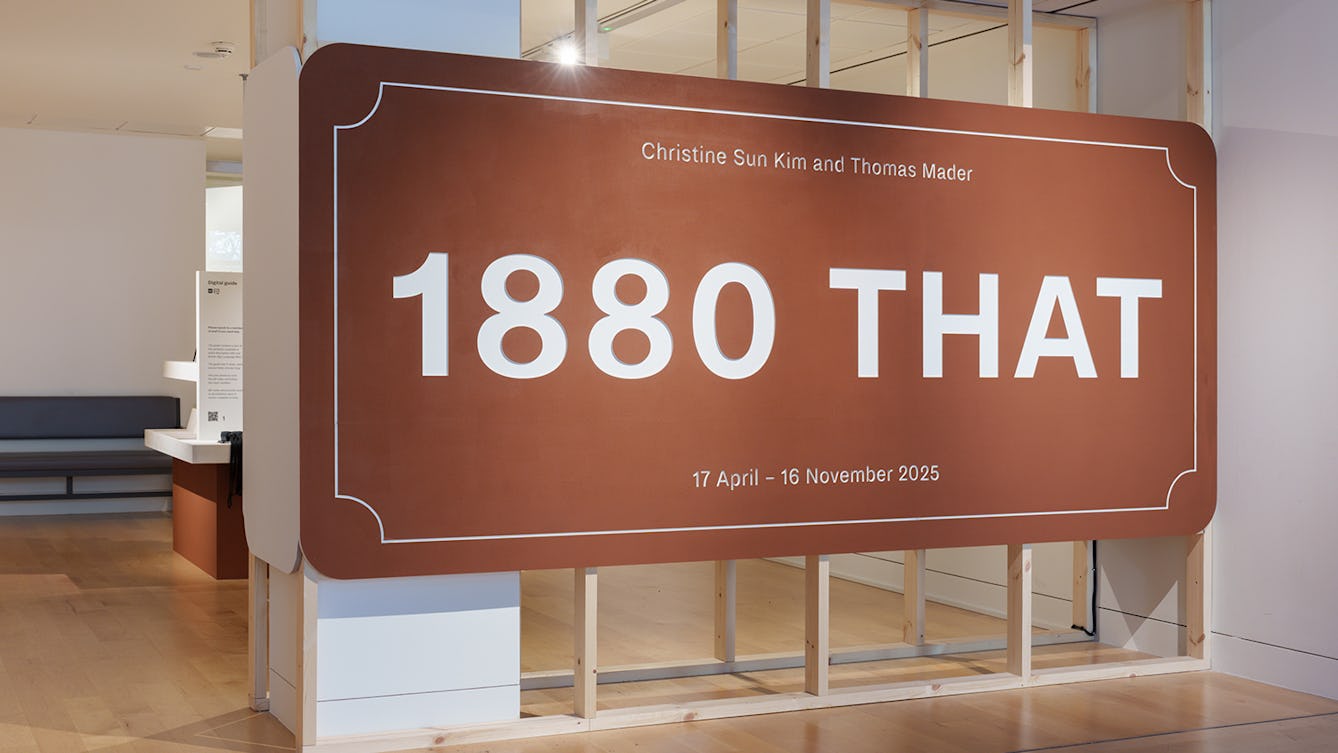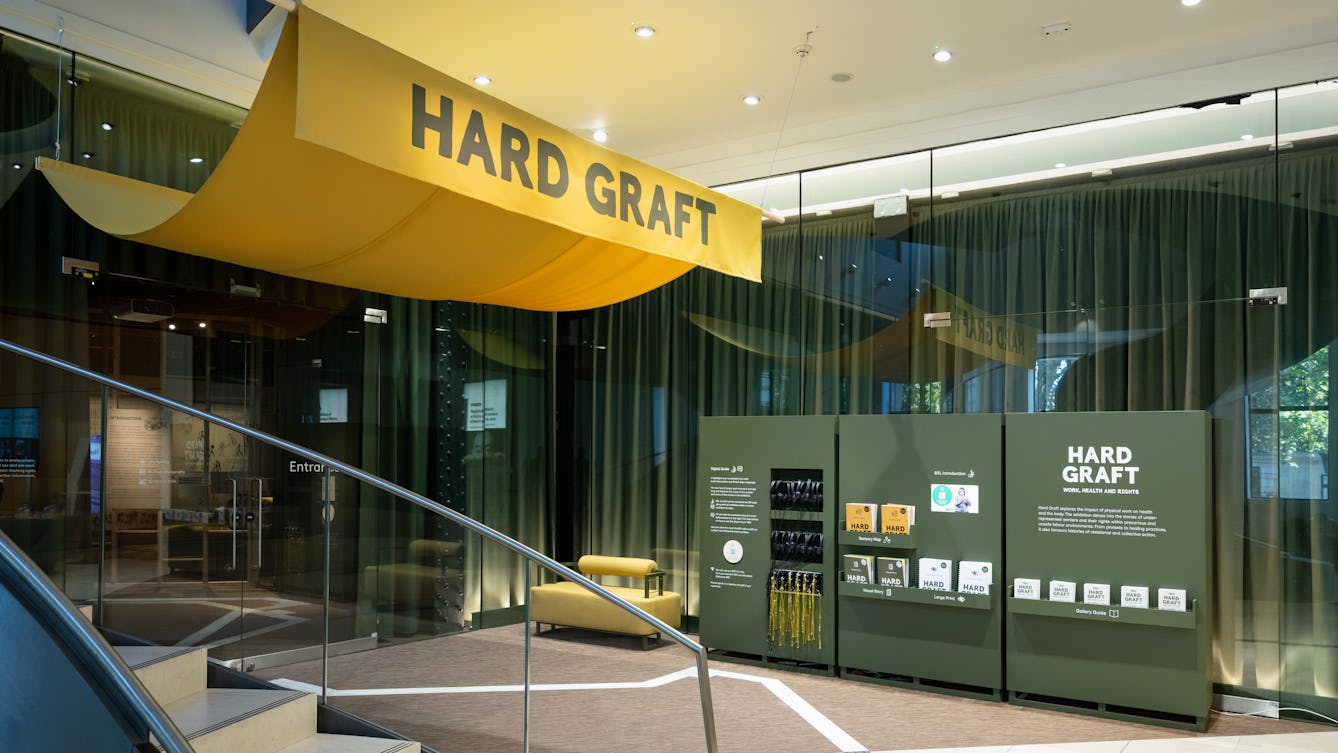Information to help you plan and prepare for your visit to the exhibition.
Video visual story
Easy-read visual story
Introduction to Thirst: In Search of Freshwater
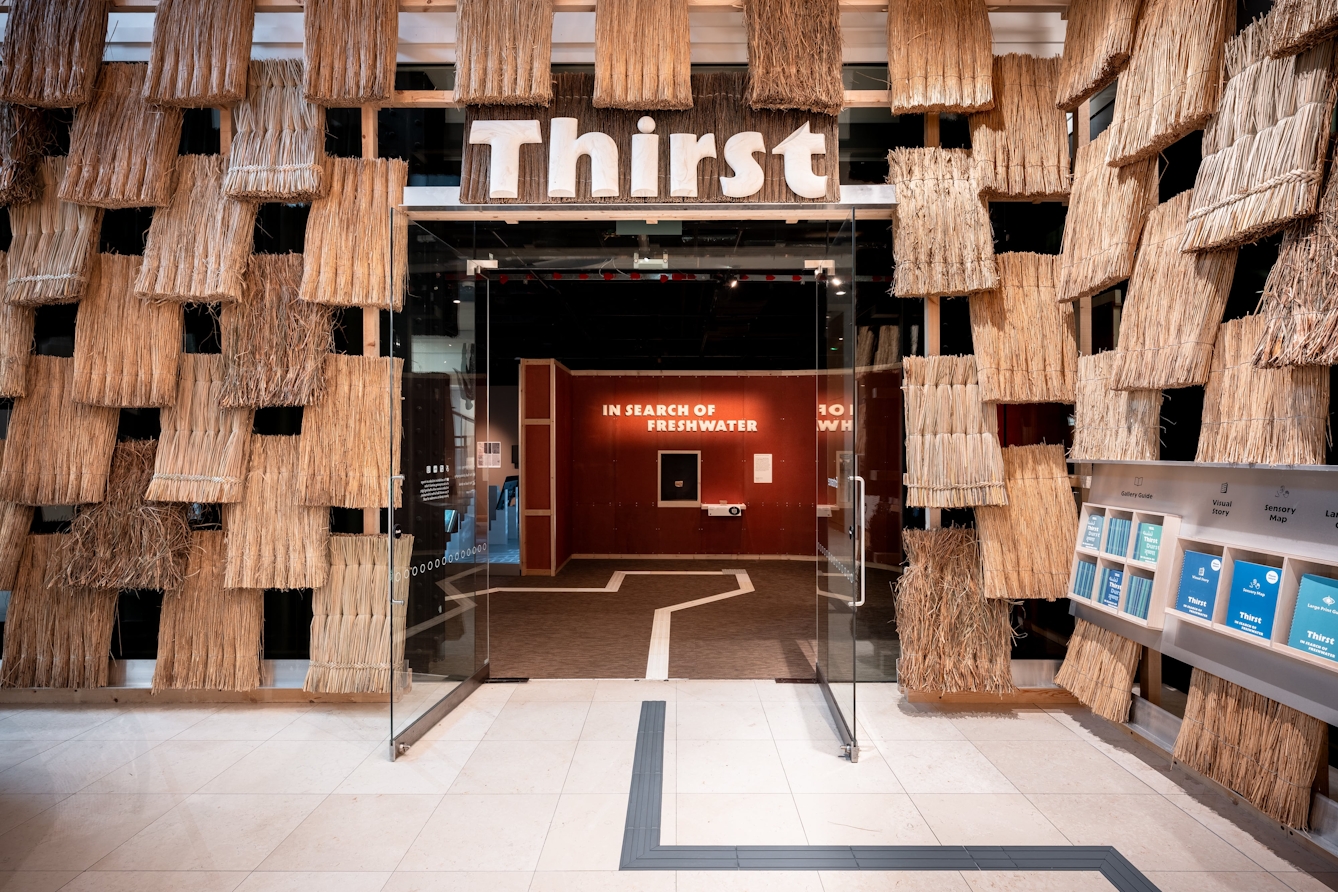
This exhibition is called ‘Thirst: In Search of Freshwater’.
An exhibition is a collection of things to look at and learn about.
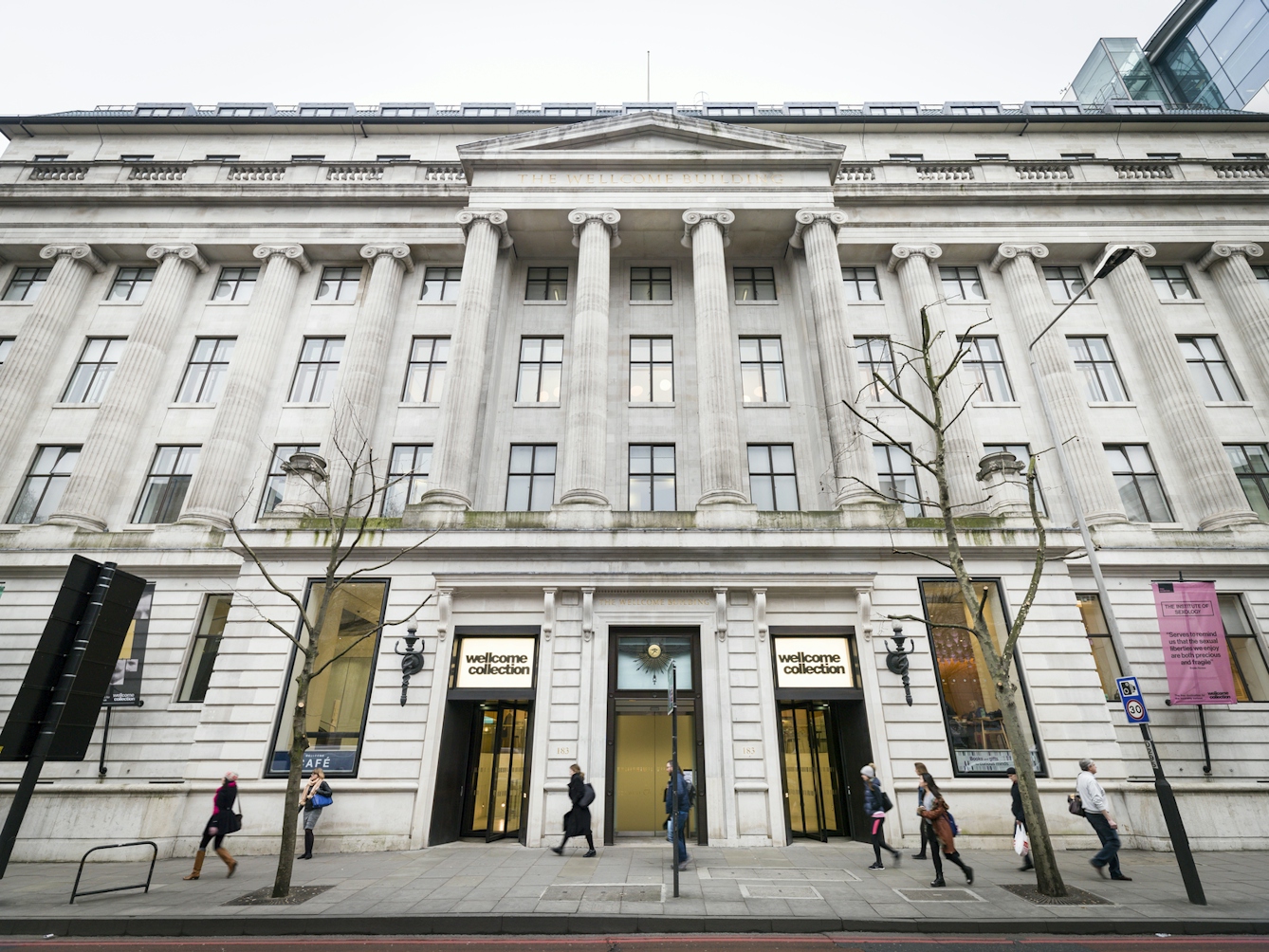
The exhibition is at Wellcome Collection.
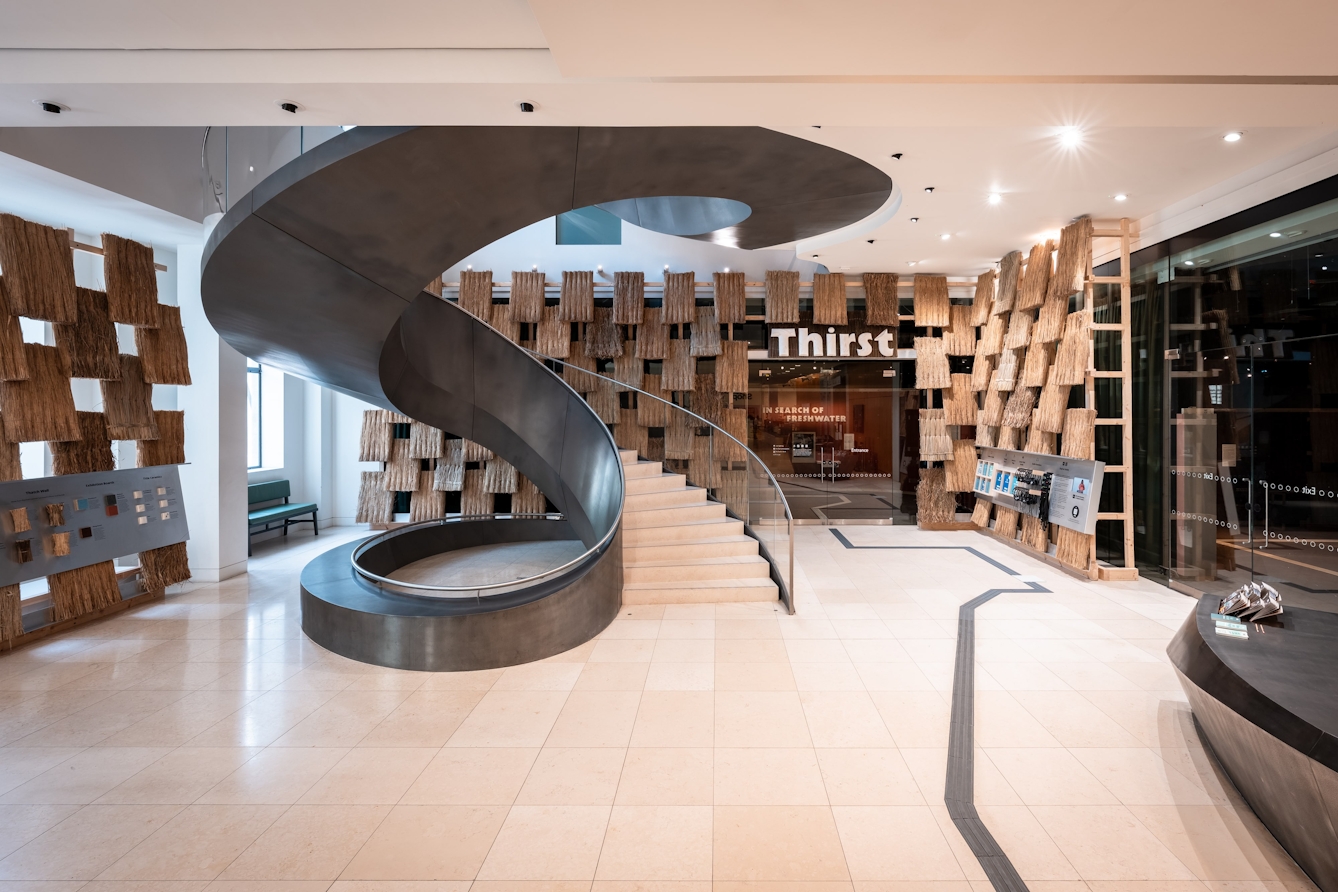
The exhibition is in Gallery 1 on level 0 of our building.
Visiting Wellcome Collection
For more information about:
- opening times
- accessibility
- travel
click on this link: Visiting Wellcome Collection visual story.
About the exhibition
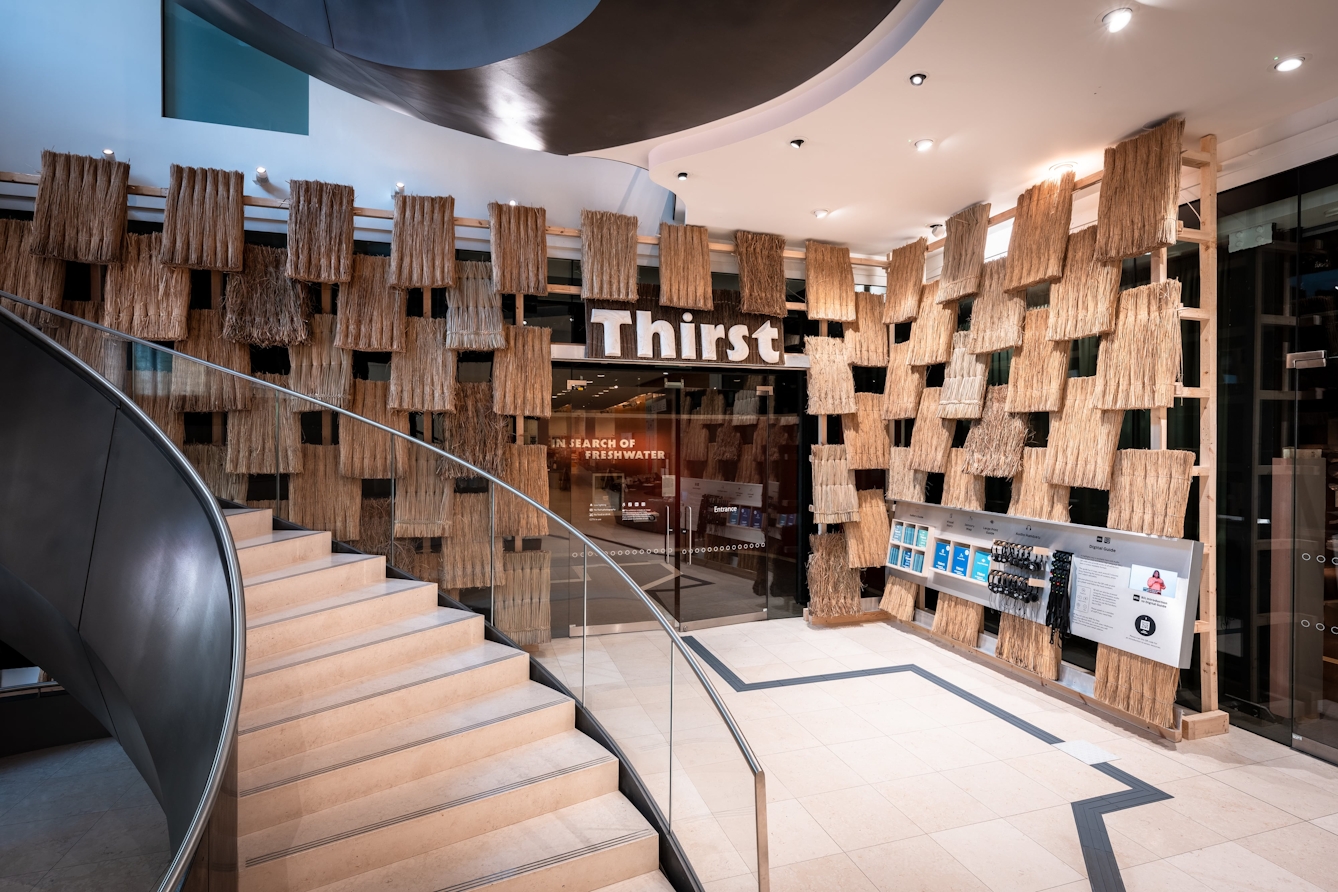
‘Thirst: In Search of Freshwater’ is an exhibition about people’s relationship to freshwater.
Freshwater is water that is not salty.
This means that:
- humans and animals can drink freshwater
- plants use freshwater to help them grow.
This exhibition tells stories about freshwater giving life to people and the planet.
What is in the exhibition
There are different things to look at, listen to and touch in the exhibition. These include:
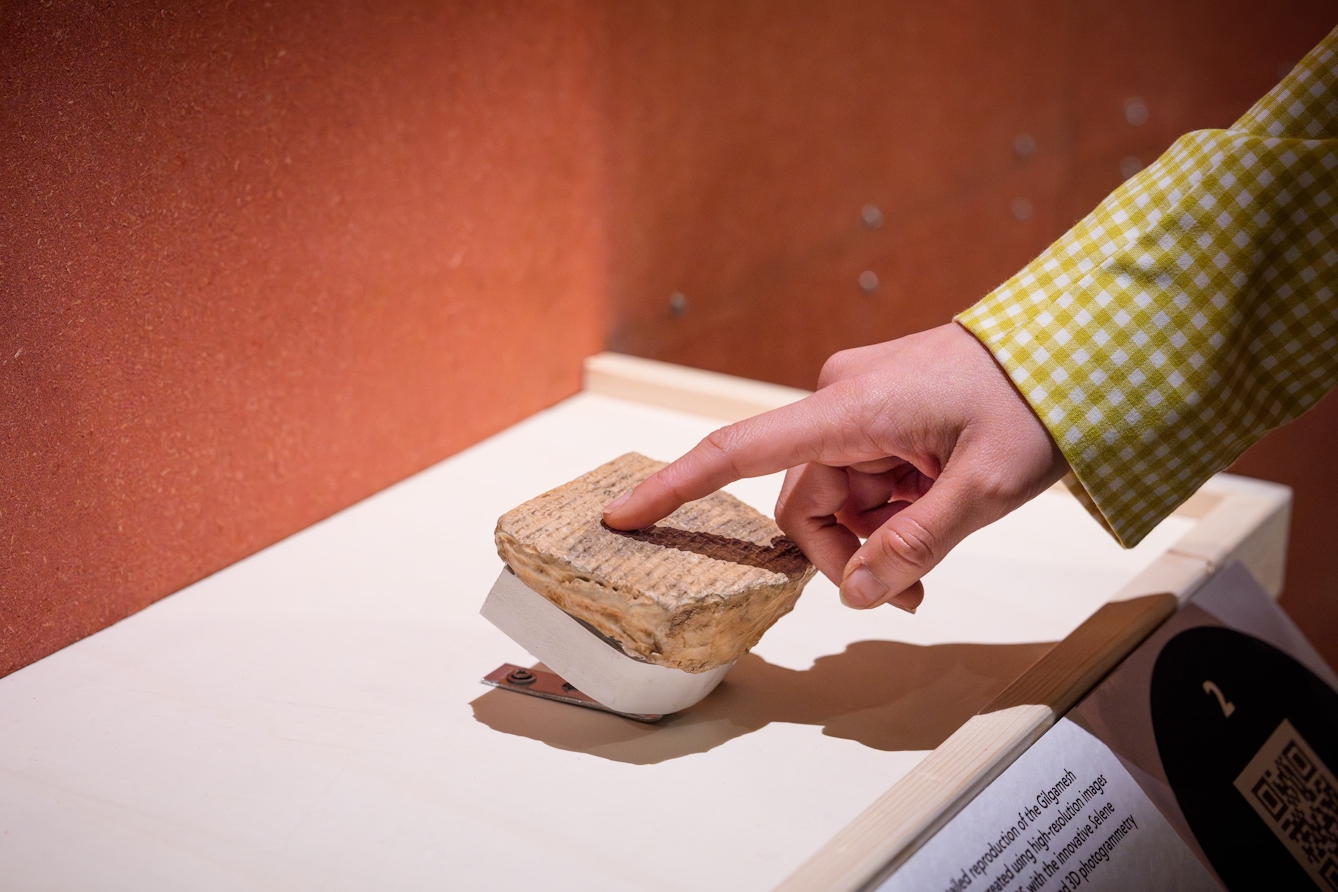
- historical objects
- photographs
- paintings and drawings
- sculptures
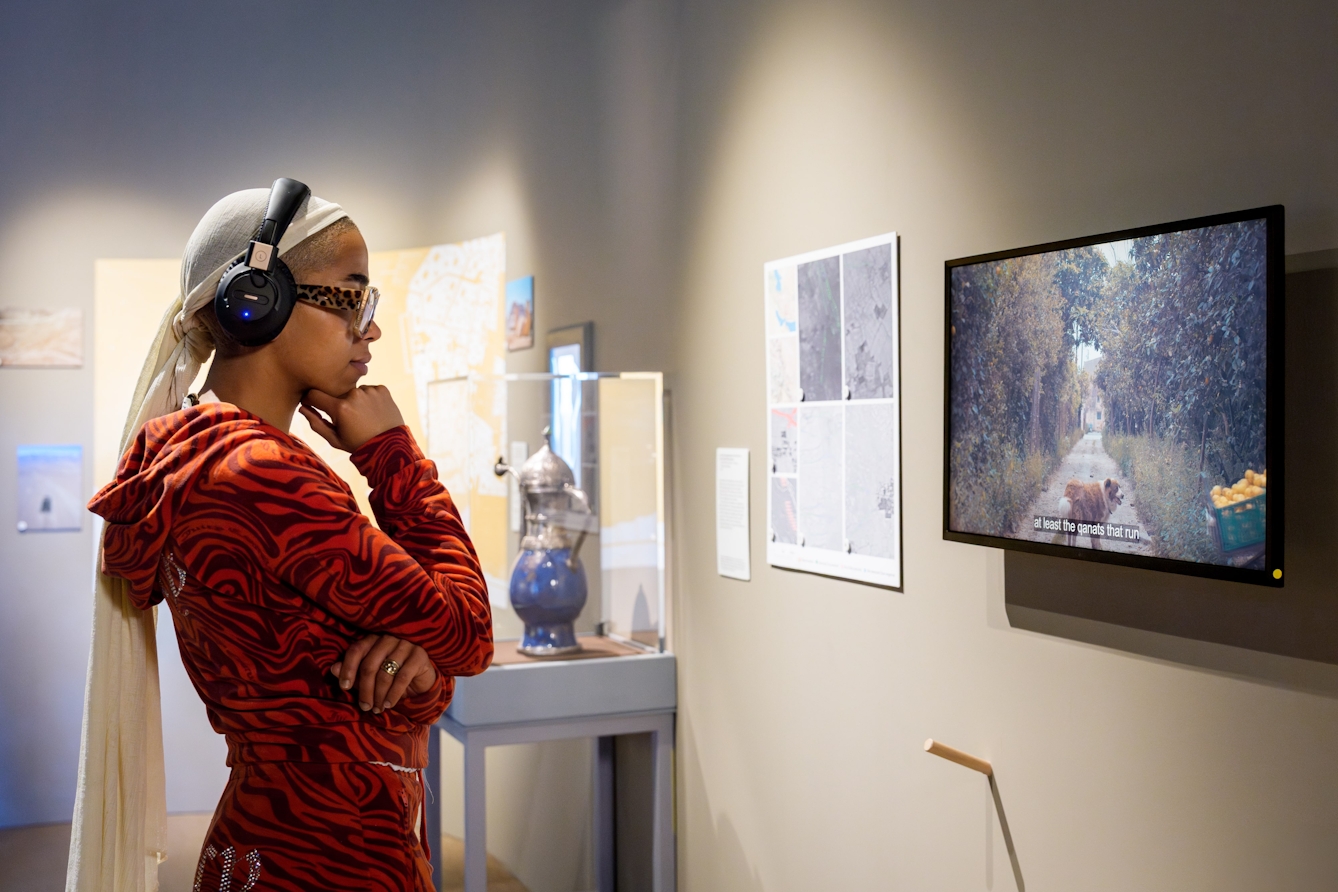
- films
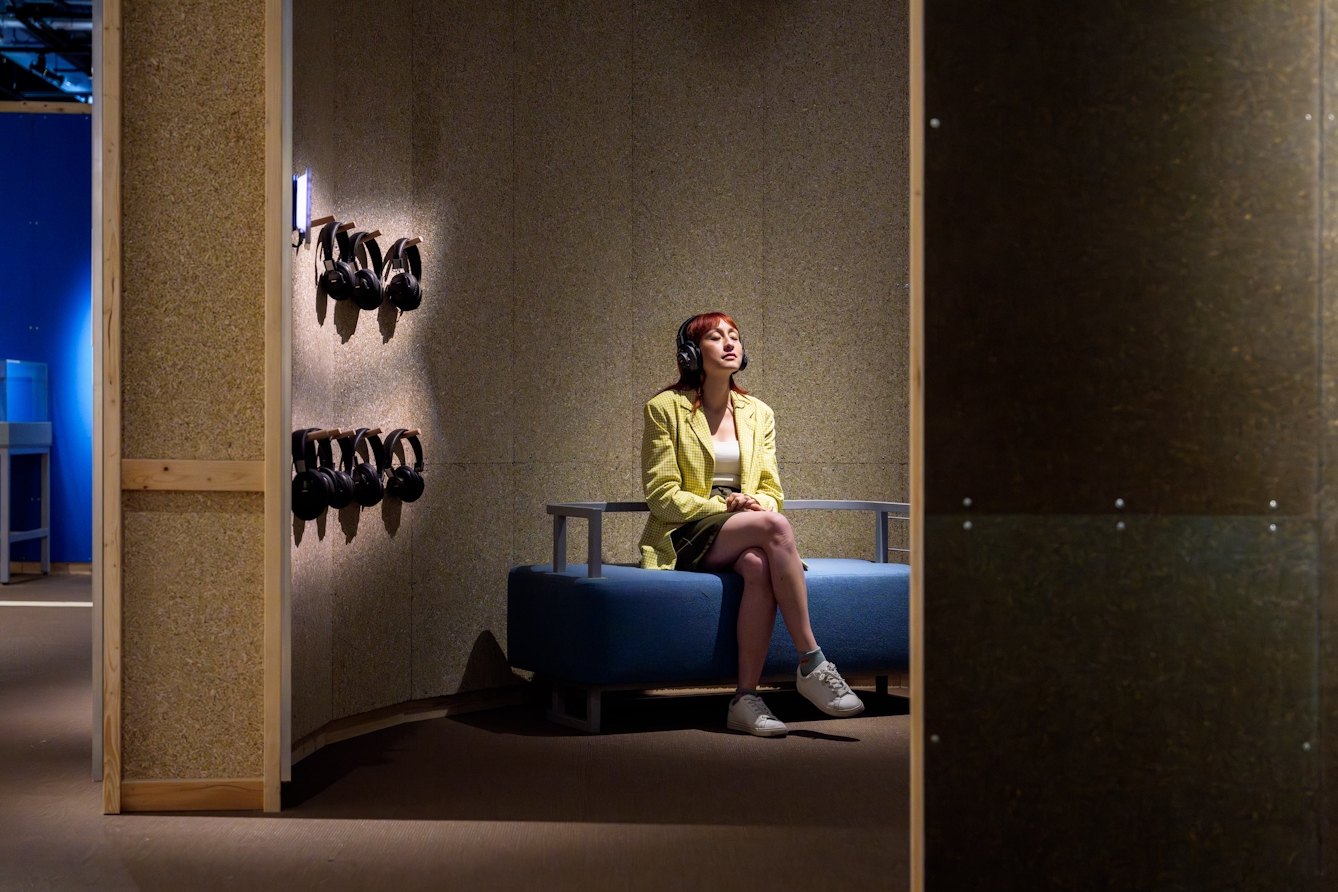
- sound works
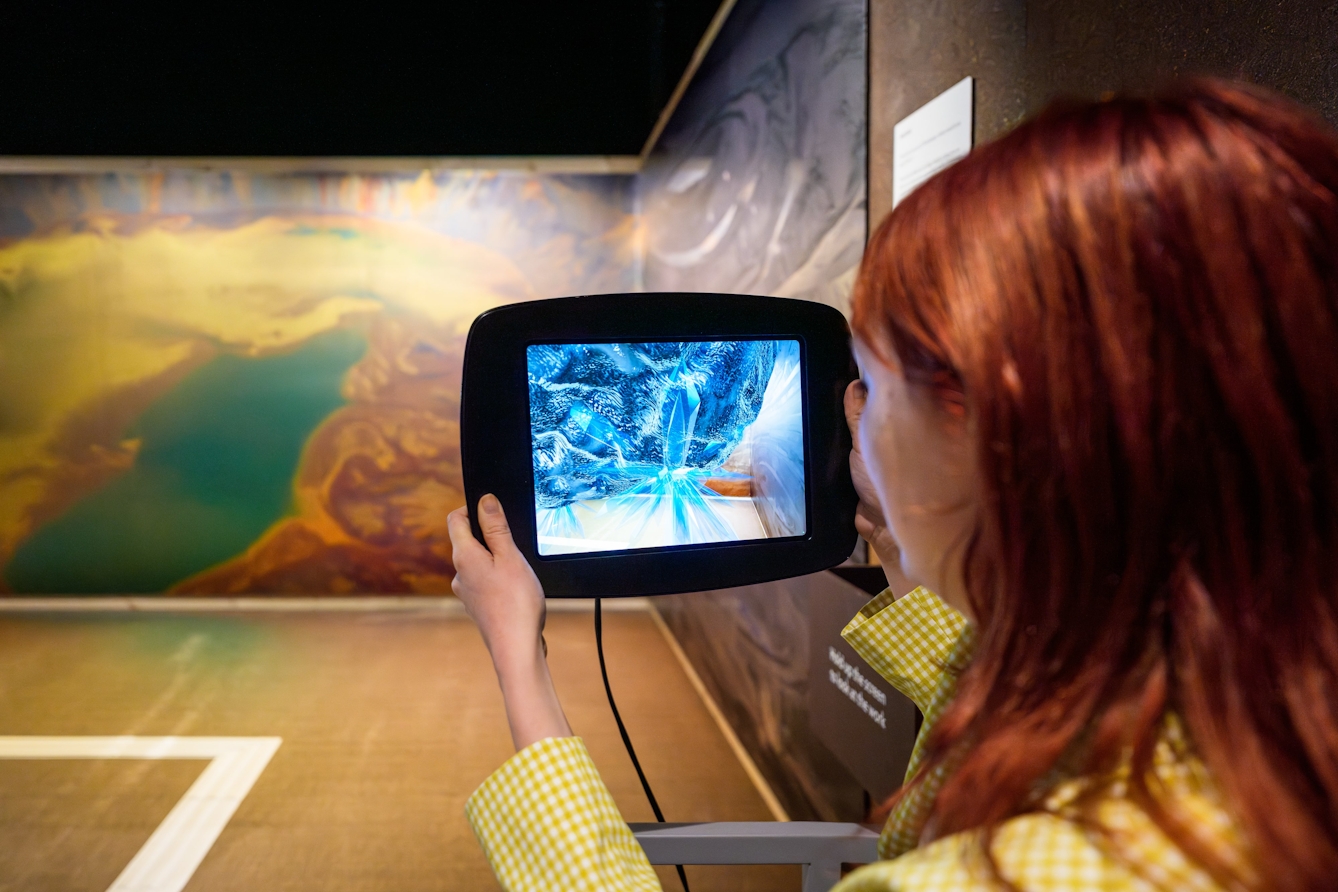
- Augmented reality work.
Augmented reality uses tools like an iPad screen to see pictures or videos on top of live video of the real world.

If you need any help, you can speak to a member of our team.
Sensory information
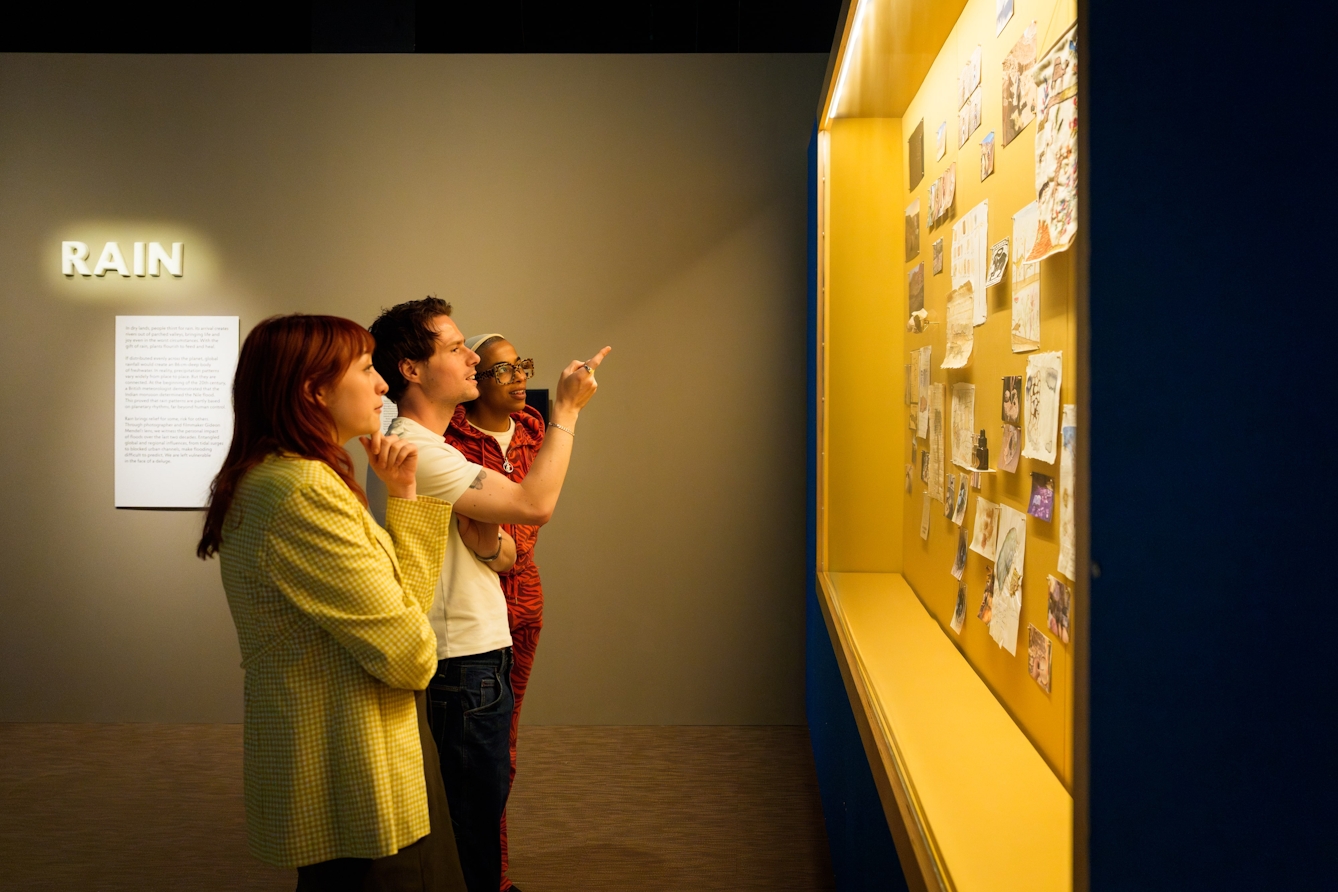
People sometimes speak quietly at an exhibition. But you do not have to speak quietly.
This exhibition includes:
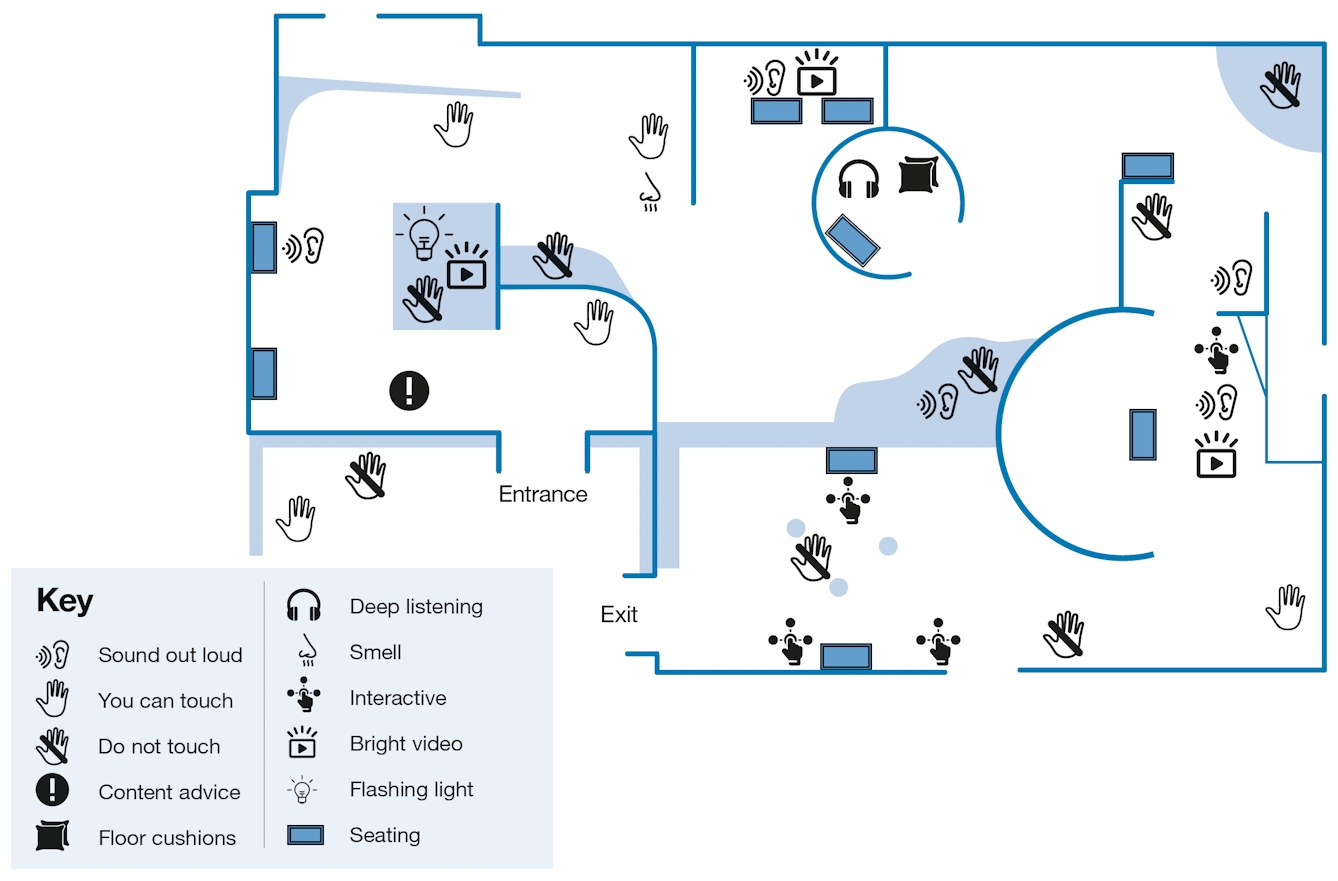
The sensory map shows you where these things are.
We will tell you more about them later in this visual story.
What is in the atrium
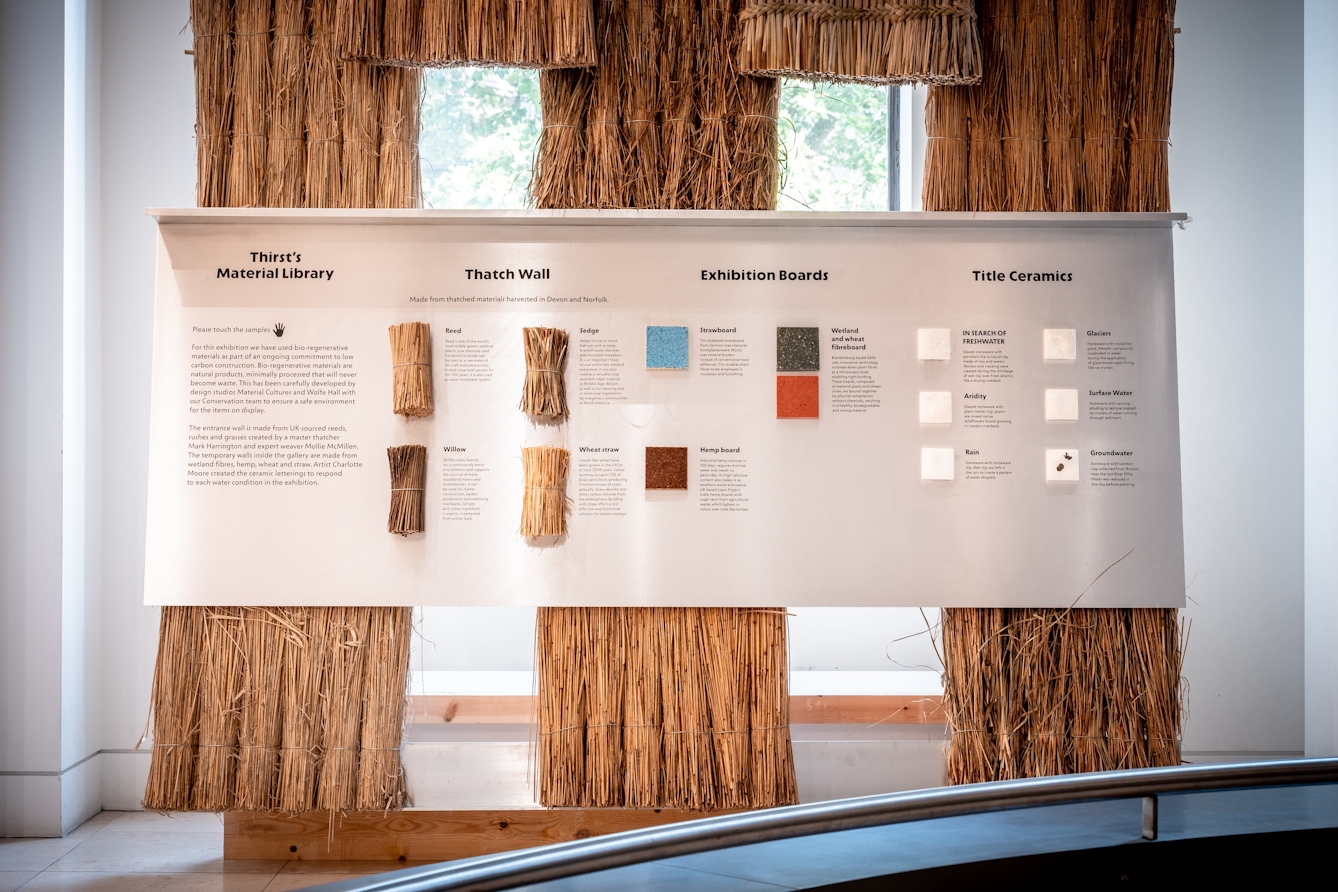
There is a Material Library in the atrium.
Material(s) in this visual story means the different things we have used to build the exhibition.
We used plant-based materials from wetlands.
Wetlands are areas where water covers the soil, like a marsh or a swamp.
There are examples of wetland materials outside the gallery.
What is in the introduction
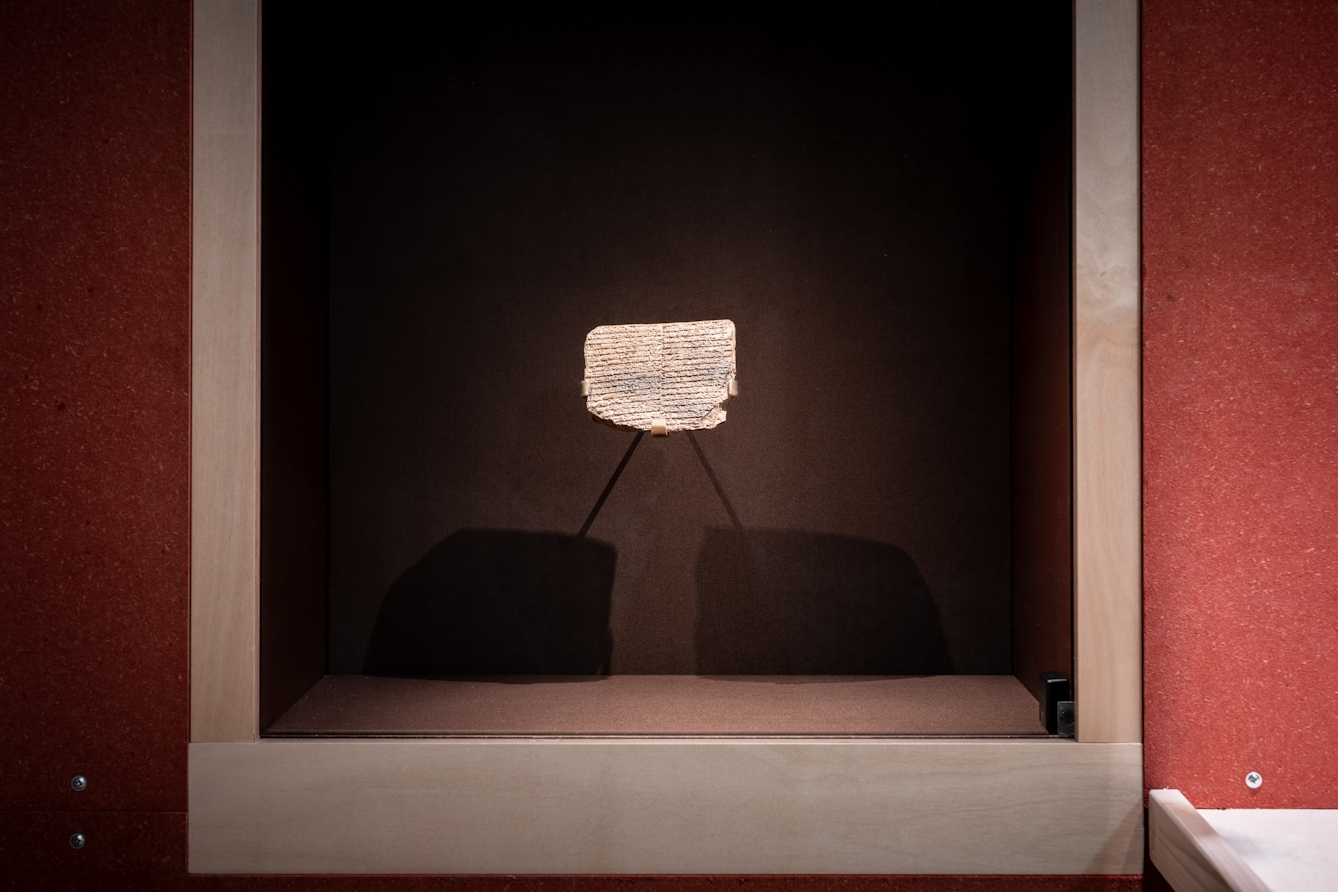
In this space there is an ancient clay tablet from Iraq.
The clay tablet is 4,000 years old.
It tells the story of two kings called Gilgamesh and Aga. The two kings were fighting each other for freshwater.
This story shows us that freshwater was important to humans a long time ago, and it is still important to humans now.

There is a copy of the clay tablet.
What is in section 1
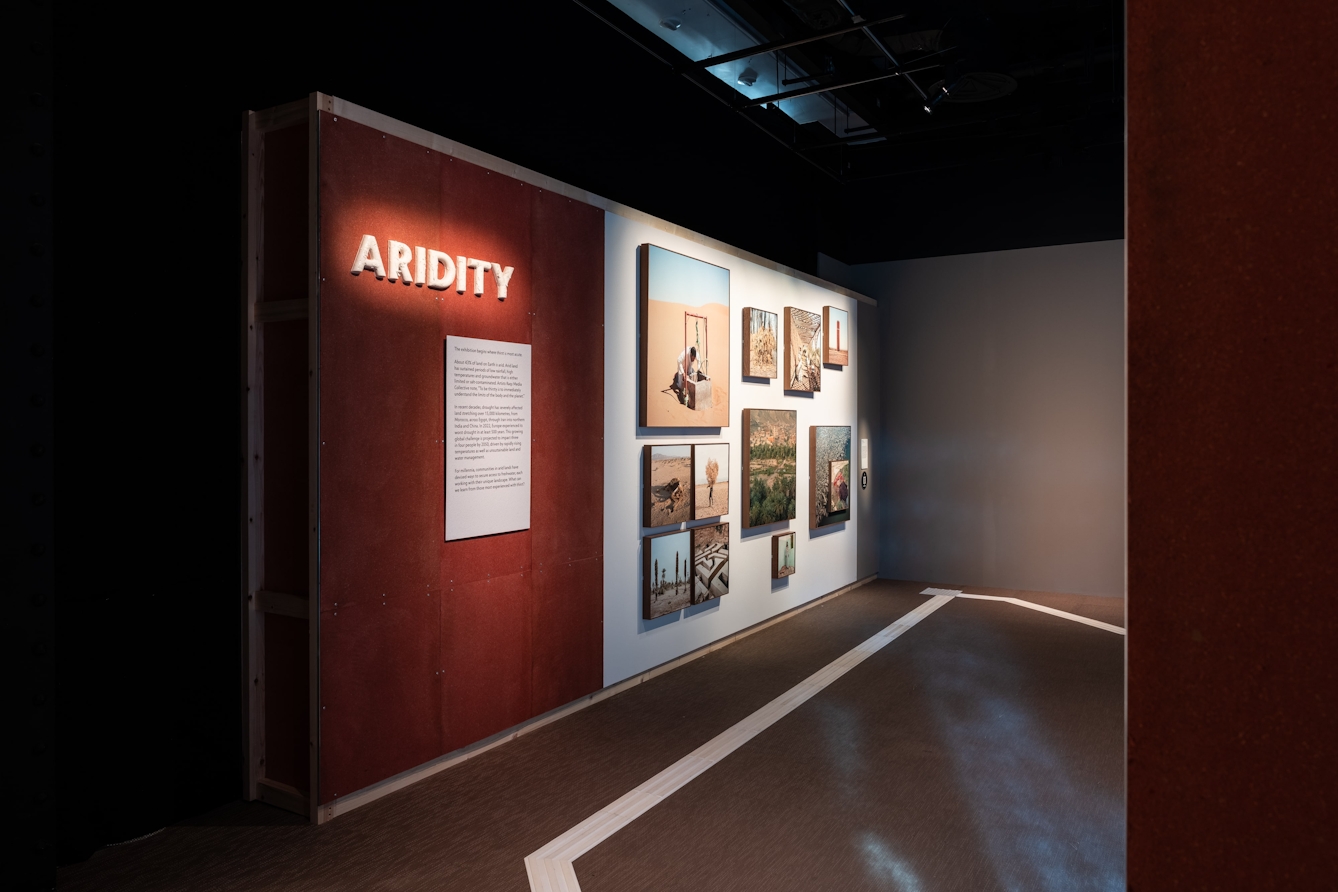
Section 1 is called ‘Aridity’.
Aridity or arid means that:
- the land is dry
- there is not much rain
- the temperature is high
- it is very hard for humans, animals and plants to get the water they need.
About 43 per cent of land on Earth is arid. People who live in arid places have found ways to survive with little or limited water.
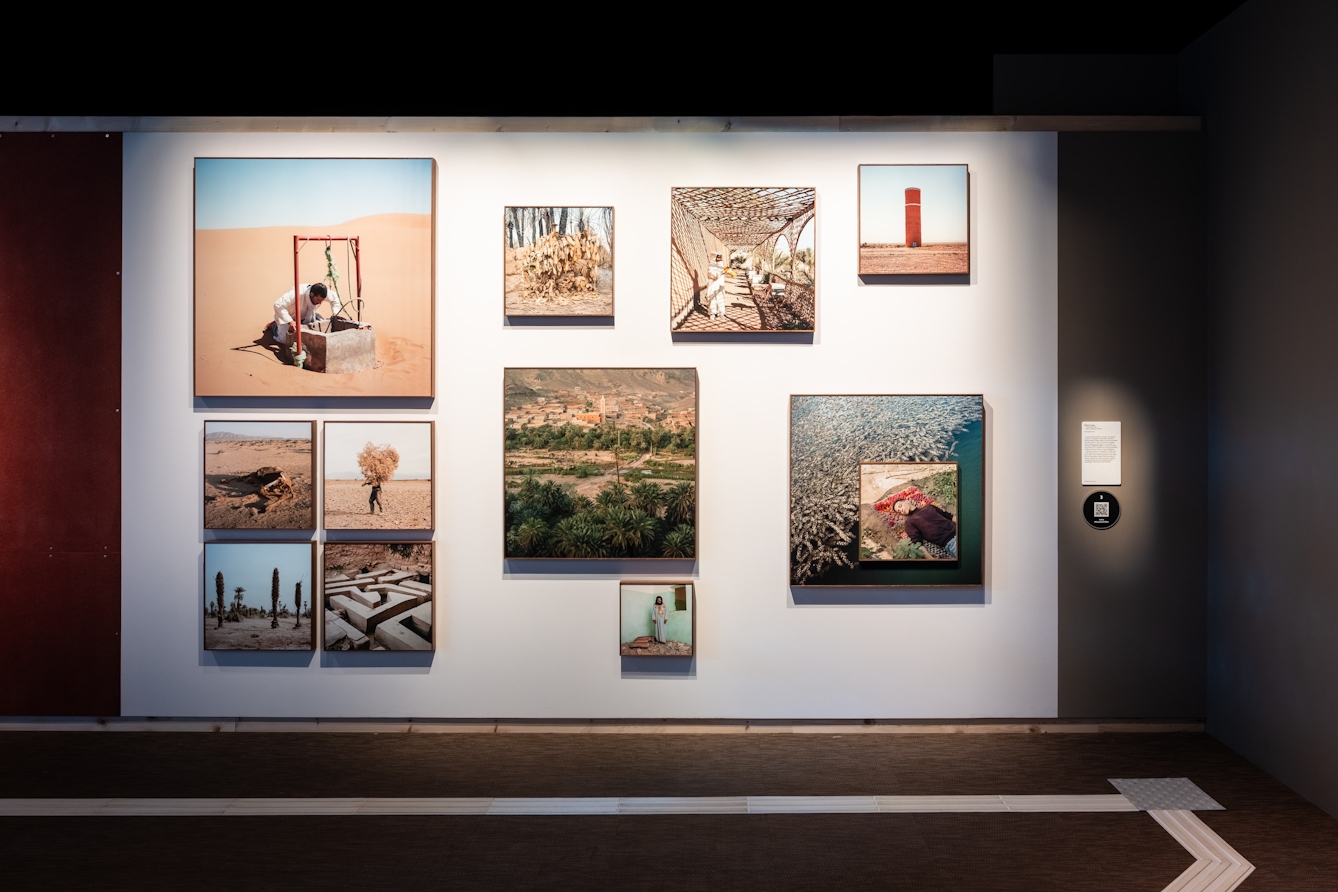
‘Before it’s gone’ by M’hammed Kilito is a series of photographs about the oasis in Morocco, Africa.
An oasis is a place in the desert with freshwater.
A desert is an area where there is little rain.
M’hammed’s photos show human, animal and plant life in the oasis.
He also shows how the oasis and the way of life for people who live there is under threat from:
- using too much water for farming
- climate change
- drought.
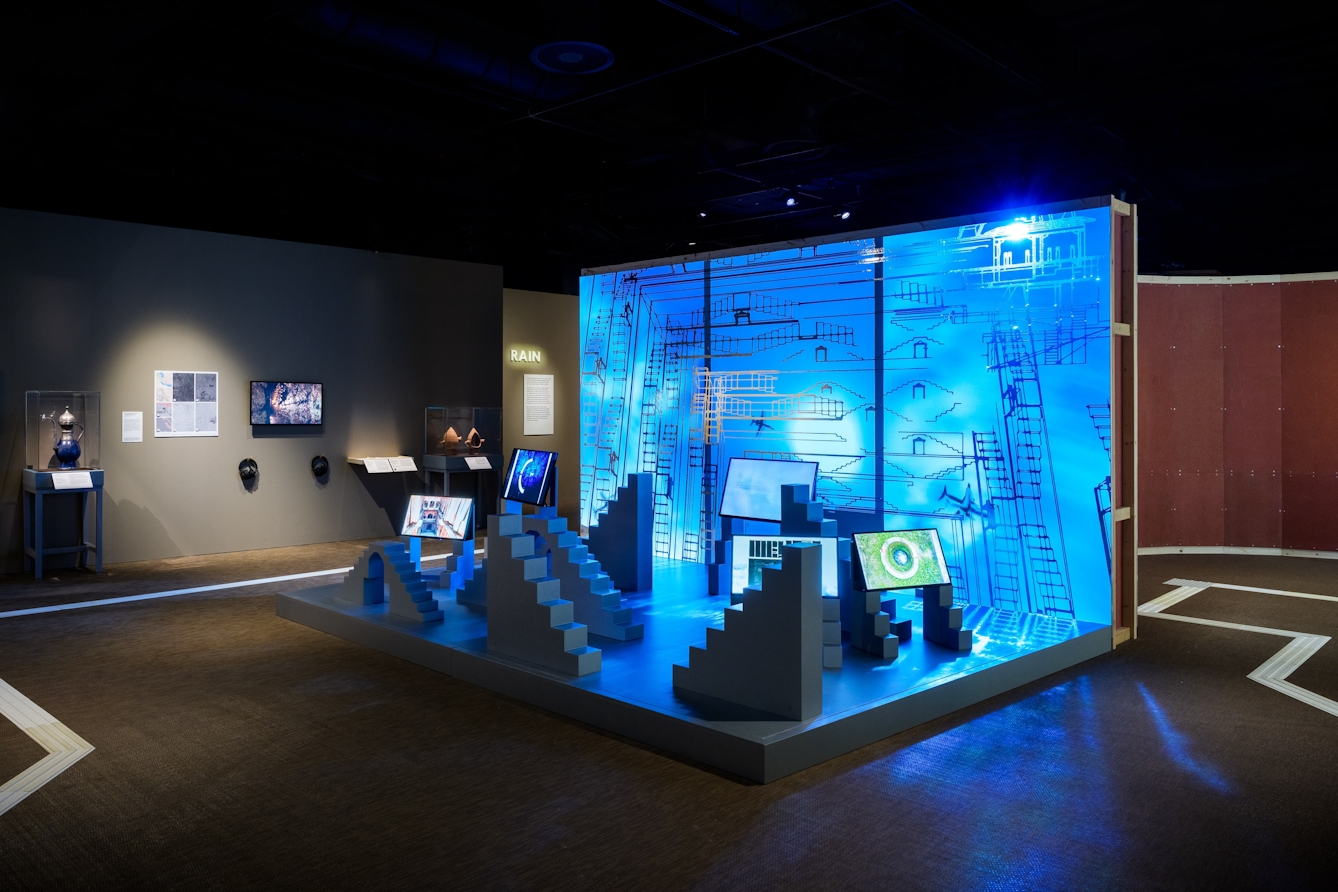
‘Thirst/Trishna’ by Raqs Media Collective is about stepwells in South Asia.
A stepwell is a place built to catch and keep rainwater. Then this water can be used when there is no rain.
Raqs made this artwork to help us think about thirst. Thirst is the experience of needing or wanting water.
There is a large projection on the wall, and five smaller video screens.
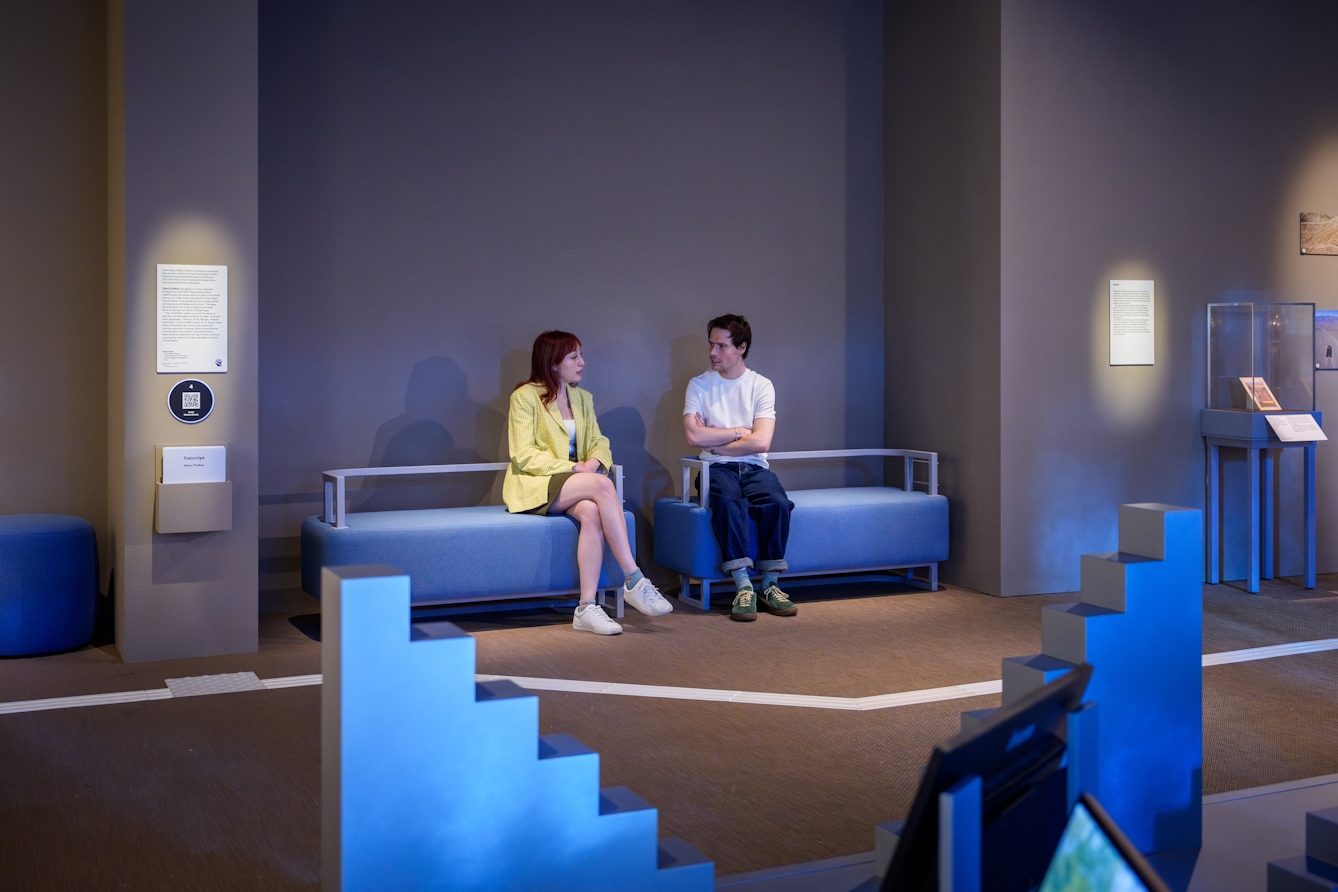
There is a bench where you can sit and watch this film.
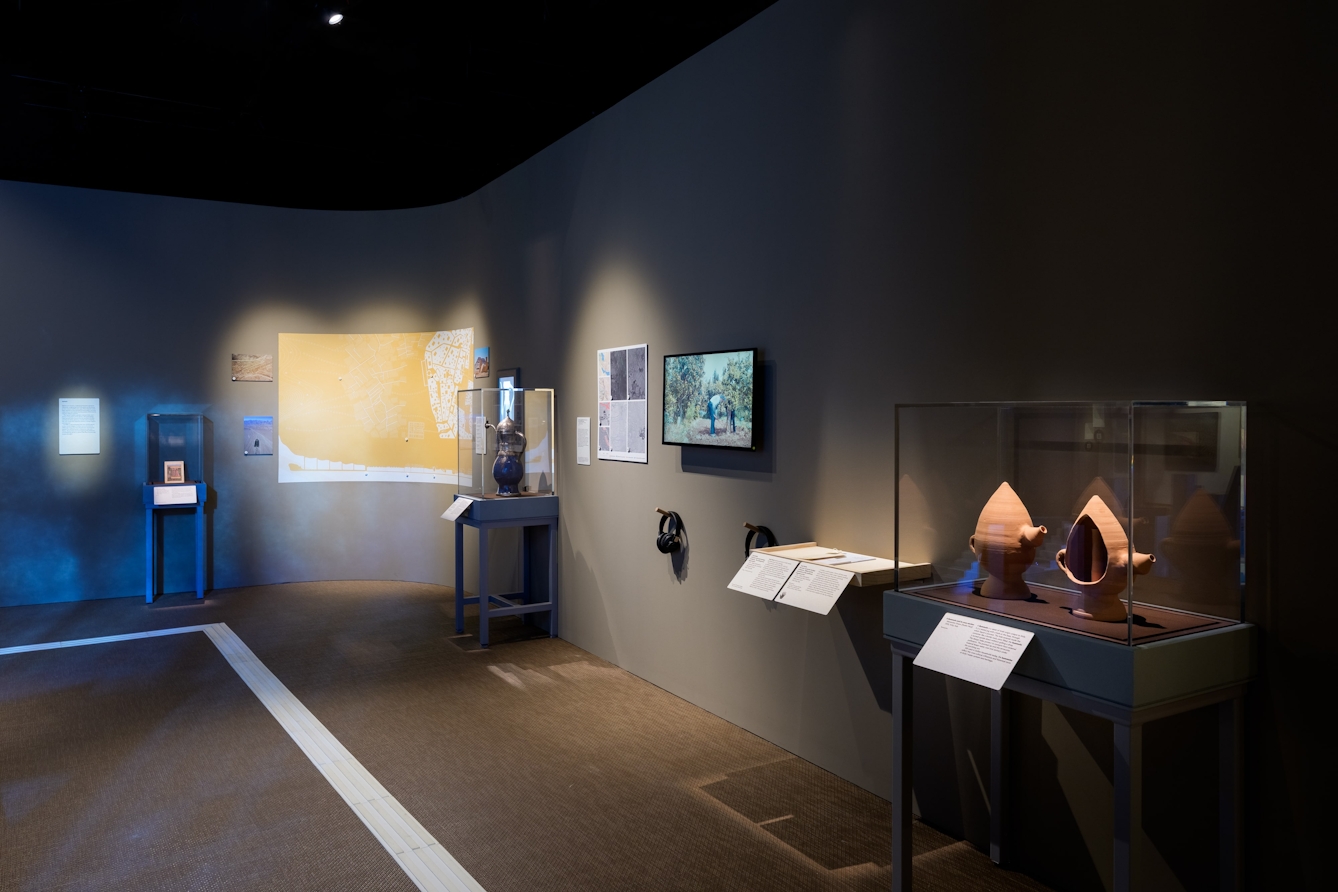
Qanats are tunnels that bring water underground from the mountains into the desert. Qanats let humans living in the desert have water for gardens, drinking and food, even when there is no rain.
In this display about qanats, there is:
- A film work called ‘Arab Fluids. On water vernacular heritage in Palermo’. It plays sound through headphones. It lasts for around 7 minutes.
- A picture of a garden in the desert from Iran.
- Maps showing qanats from above.
- A jug used to store ice for cold drinks.
What is in section 2
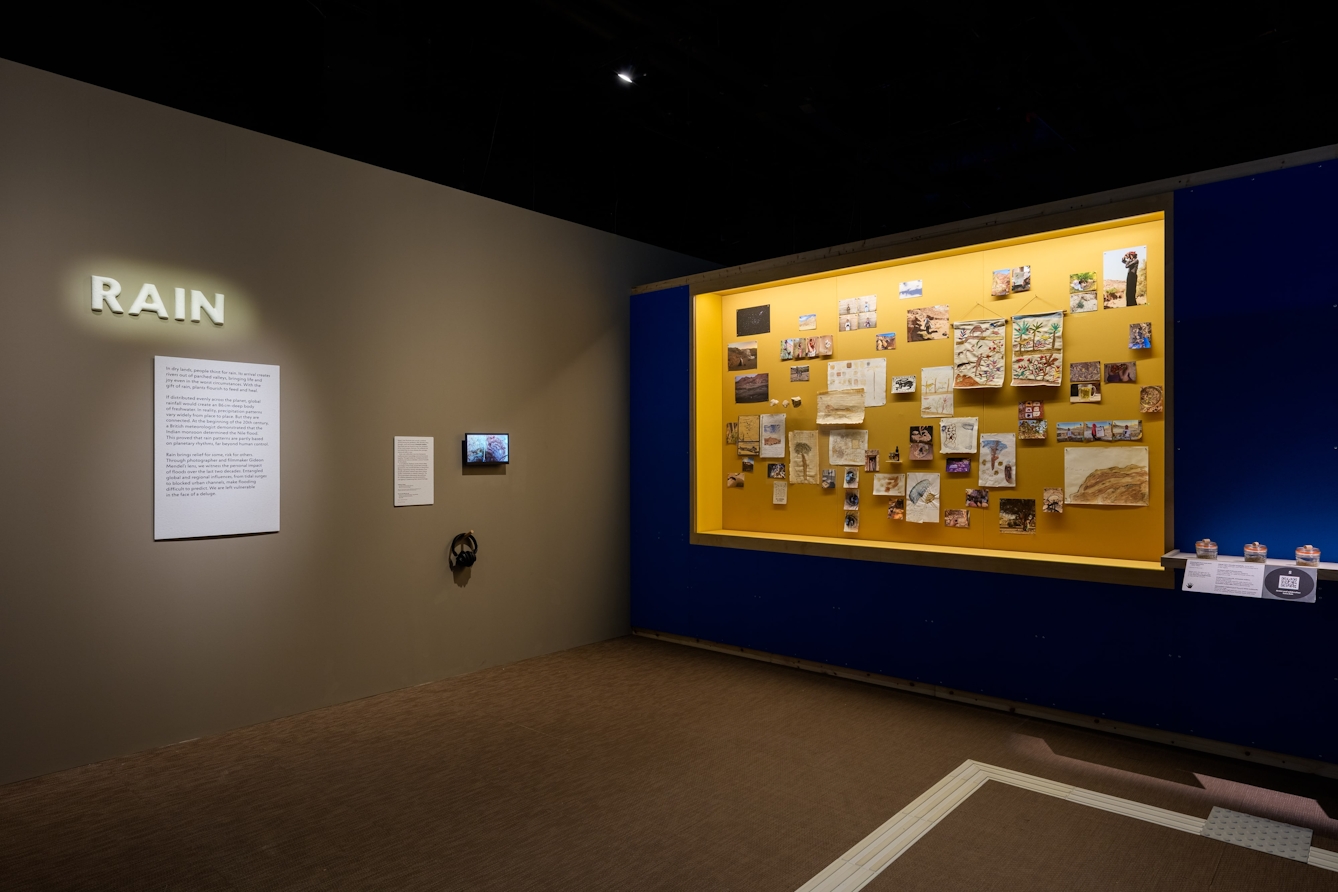
Section 2 is called ‘Rain’.
In dry places, rain is important for humans, plants and the land to survive.
But rain can also cause damage because of flooding. Flooding can be made worse by:
- climate change
- buildings made by humans.
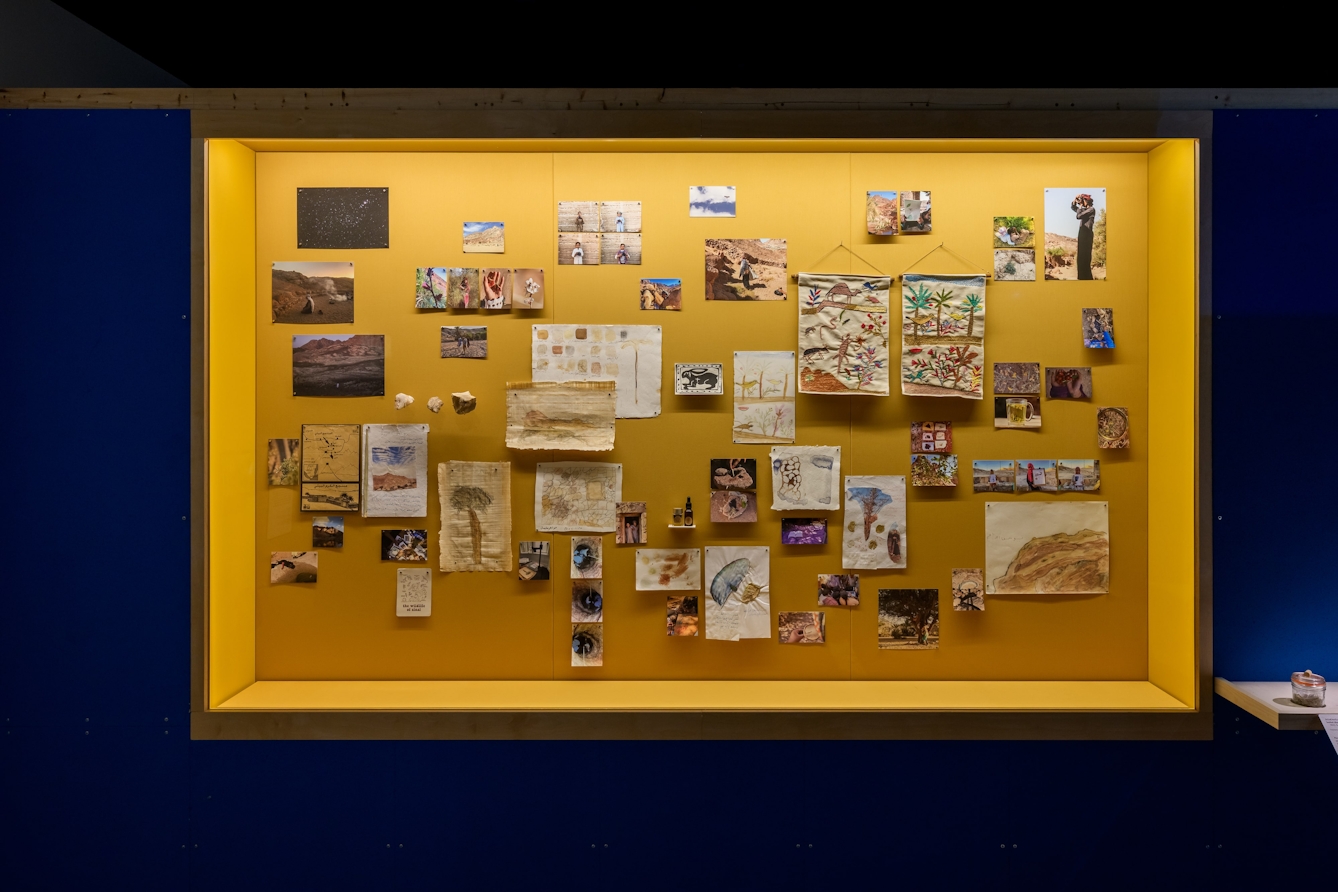
‘Walking in Wadis’ are artworks by Lora Aziz and Motanafas Collective.
Lora Aziz is an artist and wildcrafter.
A wildcrafter is someone who makes things with plants and things they find in nature.
Lora worked with young people in the Mount Sinai area in Egypt. Together they learned about ways to protect knowledge of local plants and wildlife.
The things that they made for this project are on the wall. These include:
- paintings
- tapestries / embroideries
- photographs
- journals
- a film by Lora Aziz called ‘The rain that fills the well’ that lasts for around 2 minutes.
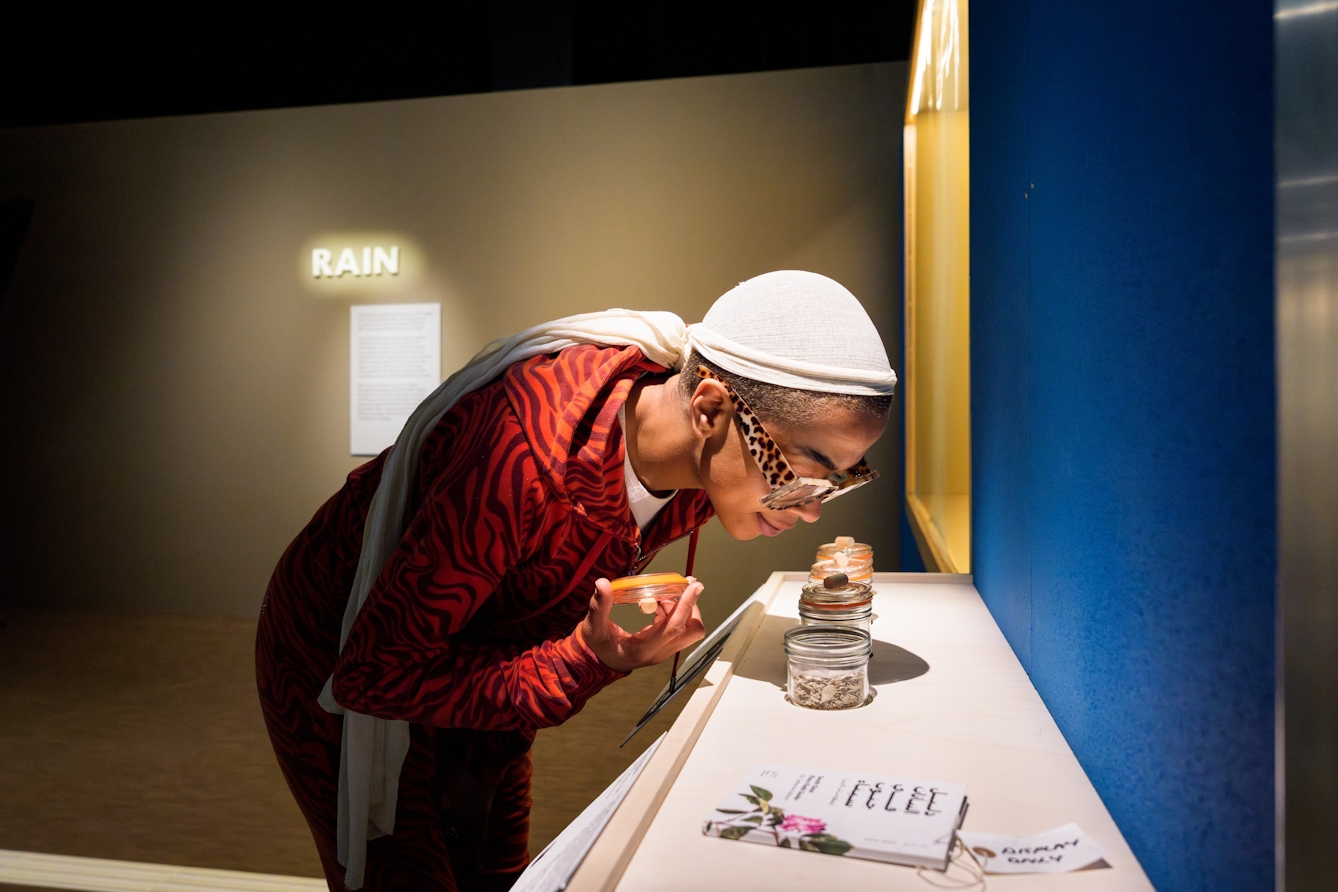
Next to the wall artworks there is a book called the ‘Sinai Floral Field Guide’. This has information about the plants of Mount Sinai.
There are also four jars of herbs and plants from Mount Sinai.
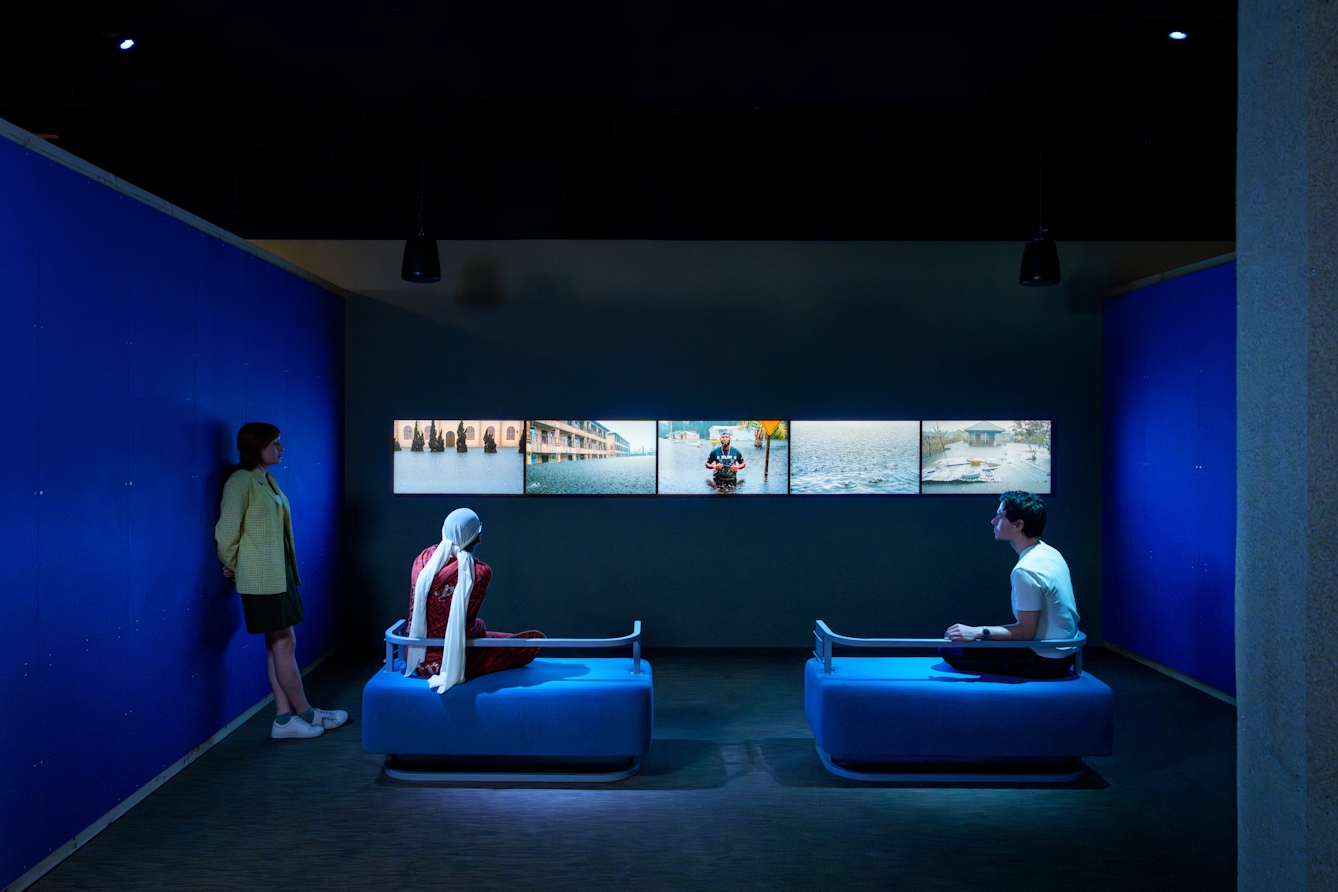
‘Deluge’ is a film by Gideon Mendel.
Gideon Mendel is a photographer, filmmaker and activist. An activist is someone who works to make social or political change.
This film shows videos on five screens. It shows how floods cause problems for people and places around the world.
The film lasts around 21 minutes.
What is in section 3
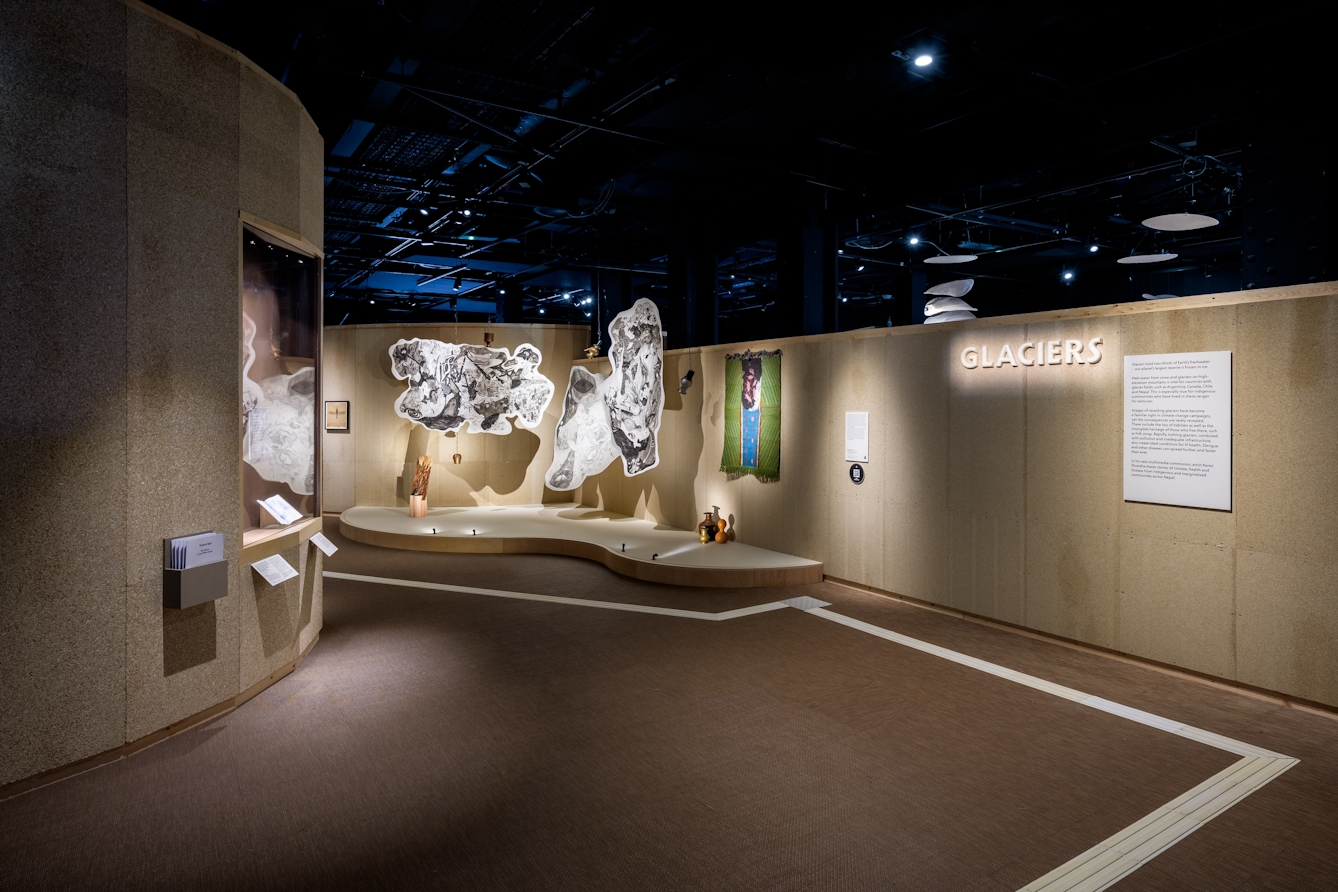
Section 3 is called ‘Glaciers’.
A glacier is a large area of thick ice that stays frozen all year round. Most of the world’s freshwater is held in glaciers.
Glaciers are melting because of climate change.
When glaciers melt, it can cause:
- damage and loss to the environment
- the spread of disease and illness
- loss of indigenous groups of people who live near glaciers and their way of life.
Indigenous means that these communities have lived here for a long time.
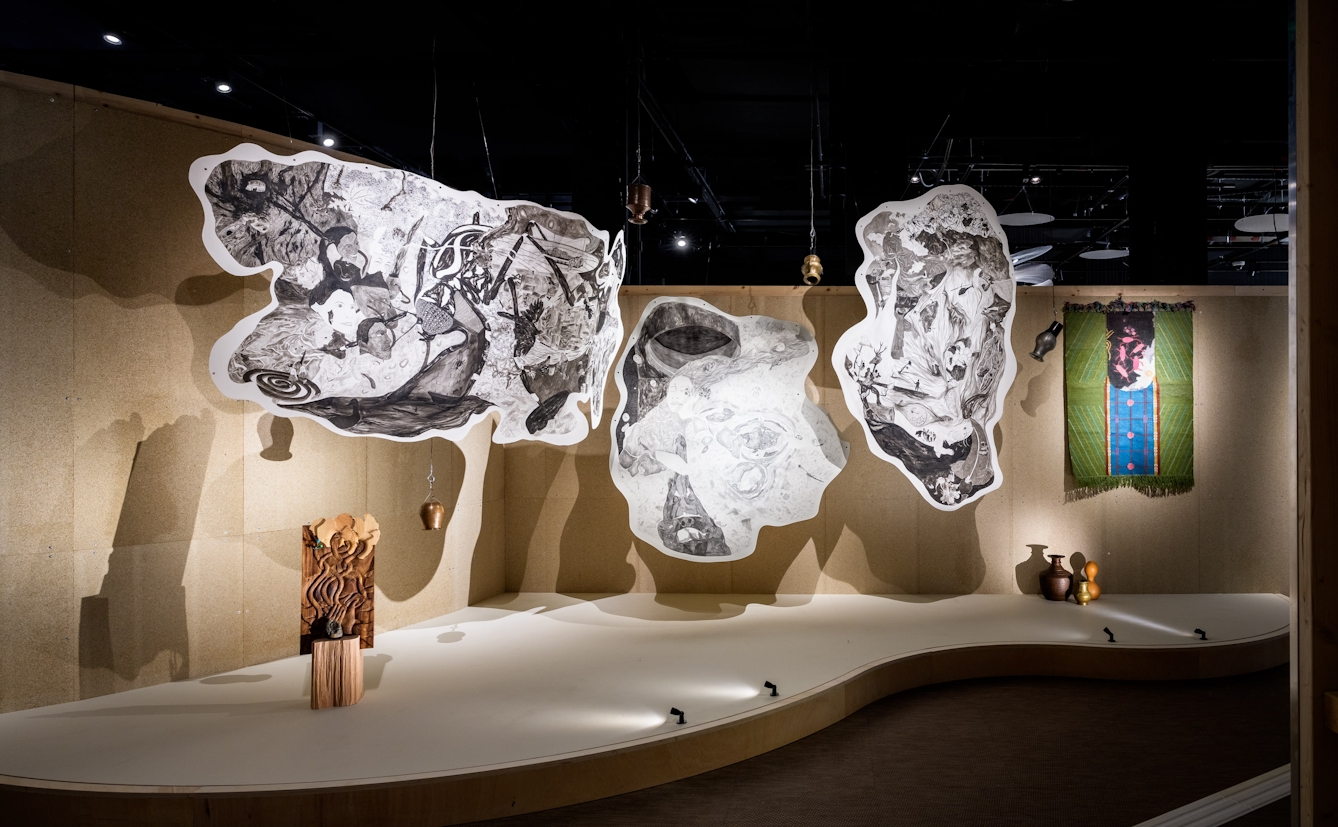
‘water-givers, memory-keepers, and the shifting forces’ is an artwork by Karan Shrestha.
Karan Shrestha is an artist from Nepal. He made this artwork to talk about the many problems with freshwater in Nepal. These include:
- glaciers melting because of global warming
- water pollution
- droughts
- floods
- landslides
- the spread of water-related diseases such as dengue
- government corruption.
Dengue is a fever spread by mosquitoes.
Corruption is dishonest or illegal behaviour by powerful people.
This artwork has:
- three hanging ink drawings on cotton paper
- a wooden sculpture with fossils
- an embroidered textile
- copper water pots from Nepal.
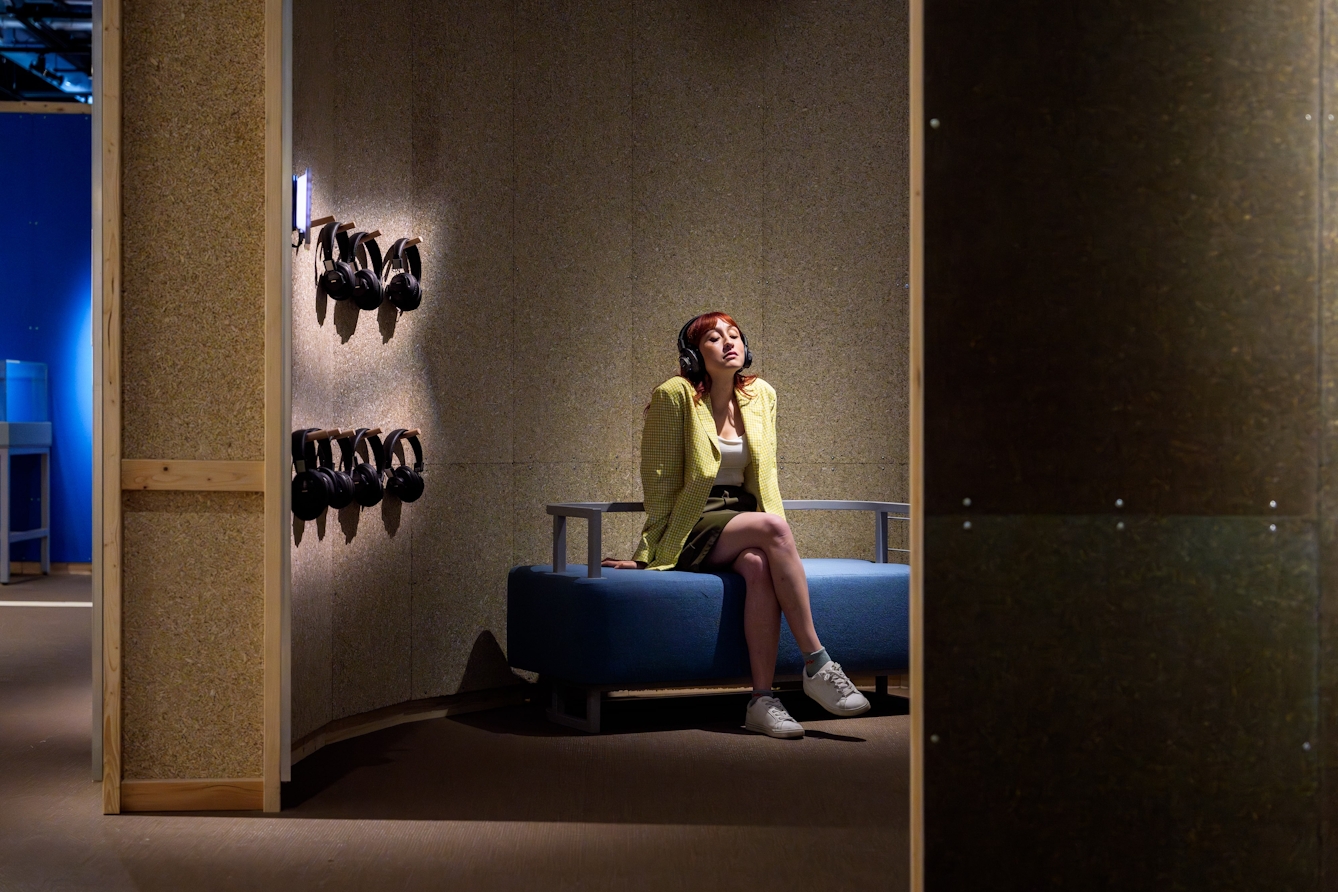
‘Ice Records’ is a sound work created by artist and researcher Susan Schuppli.
She recorded the sounds of:
- glaciers
- indigenous people singing.
There is a room with seats where you can listen to ‘Ice Records’.
It lasts around 30 minutes.
What is in section 4
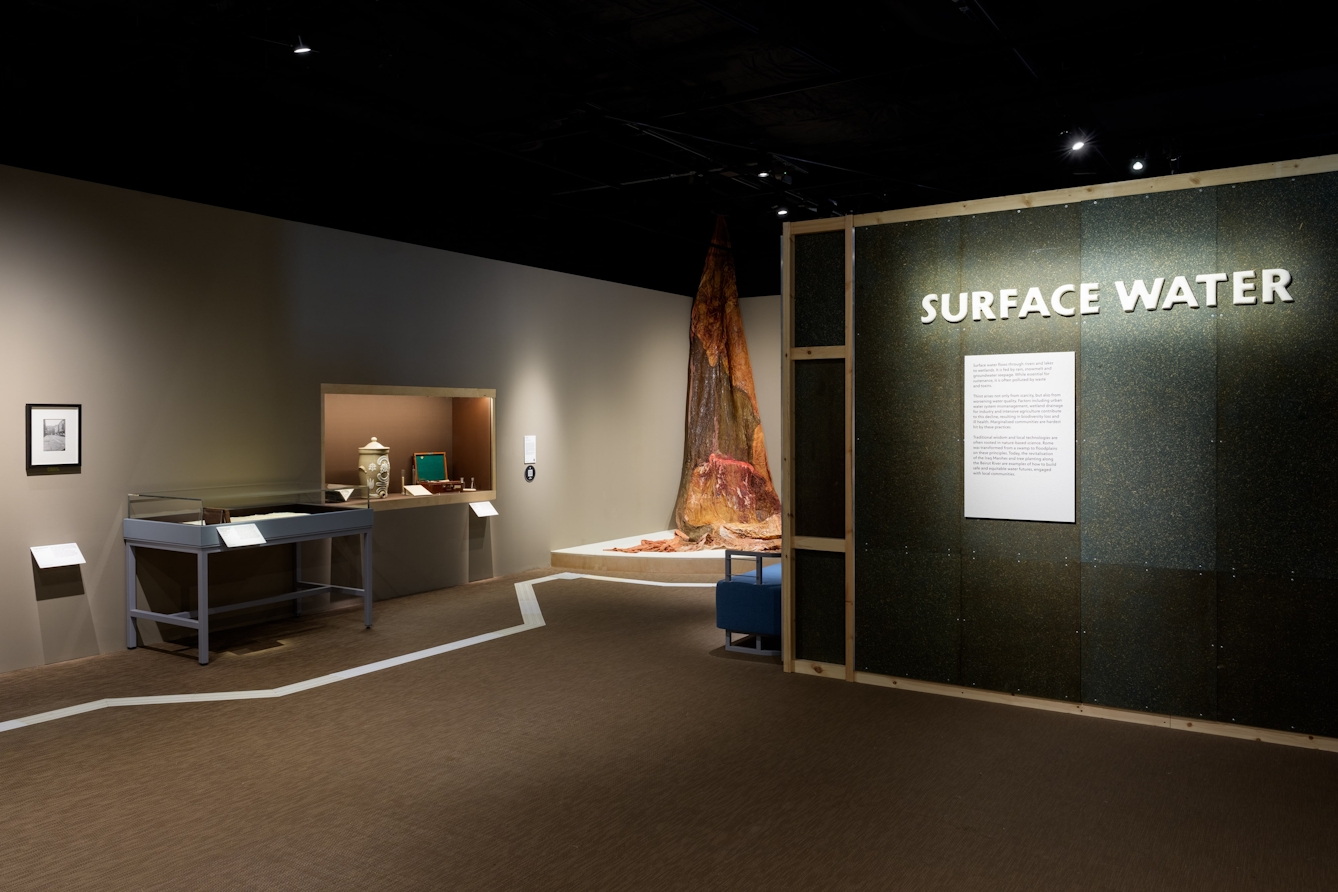
Section 4 is called ‘Surface Water’.
Surface water is freshwater that is above the ground. This includes water in:
- rivers
- lakes
- marshes.
This water can often become polluted. Polluted means when waste, chemicals or other harmful substances are put into the environment.
This causes dangers for humans and the environment.
This section talks about how humans around the world have tried to stop these dangers.
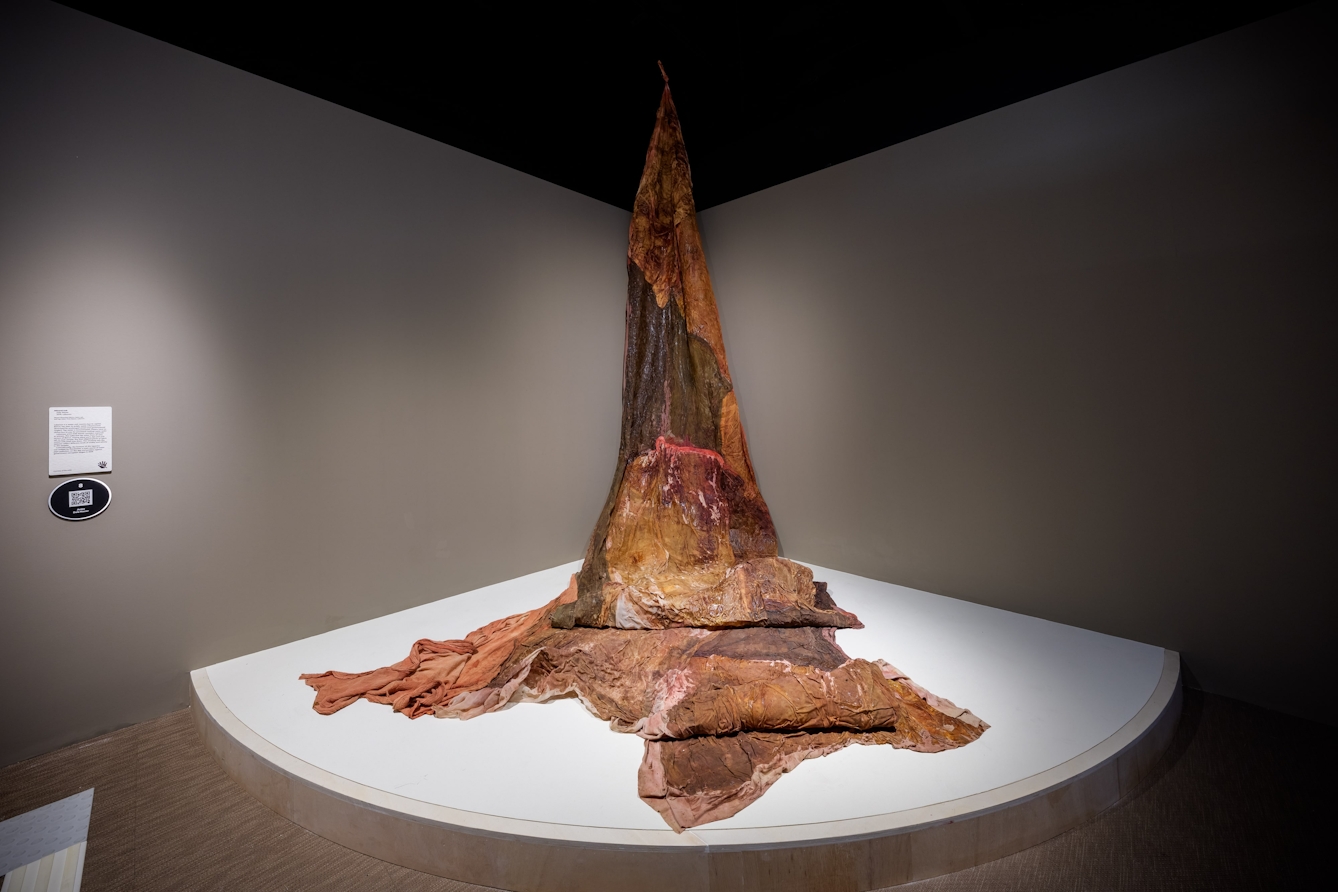
‘Mineral Lick’ is an artwork by Dala Nasser.
Dala Nasser is an artist from Lebanon. She made ‘Mineral Lick’ to show how government corruption causes pollution in the drinking water in the city of Beirut. This pollution makes the water unsafe to drink.
She made the artwork using:
- fabric
- latex
- tap water from Beirut
- salt.
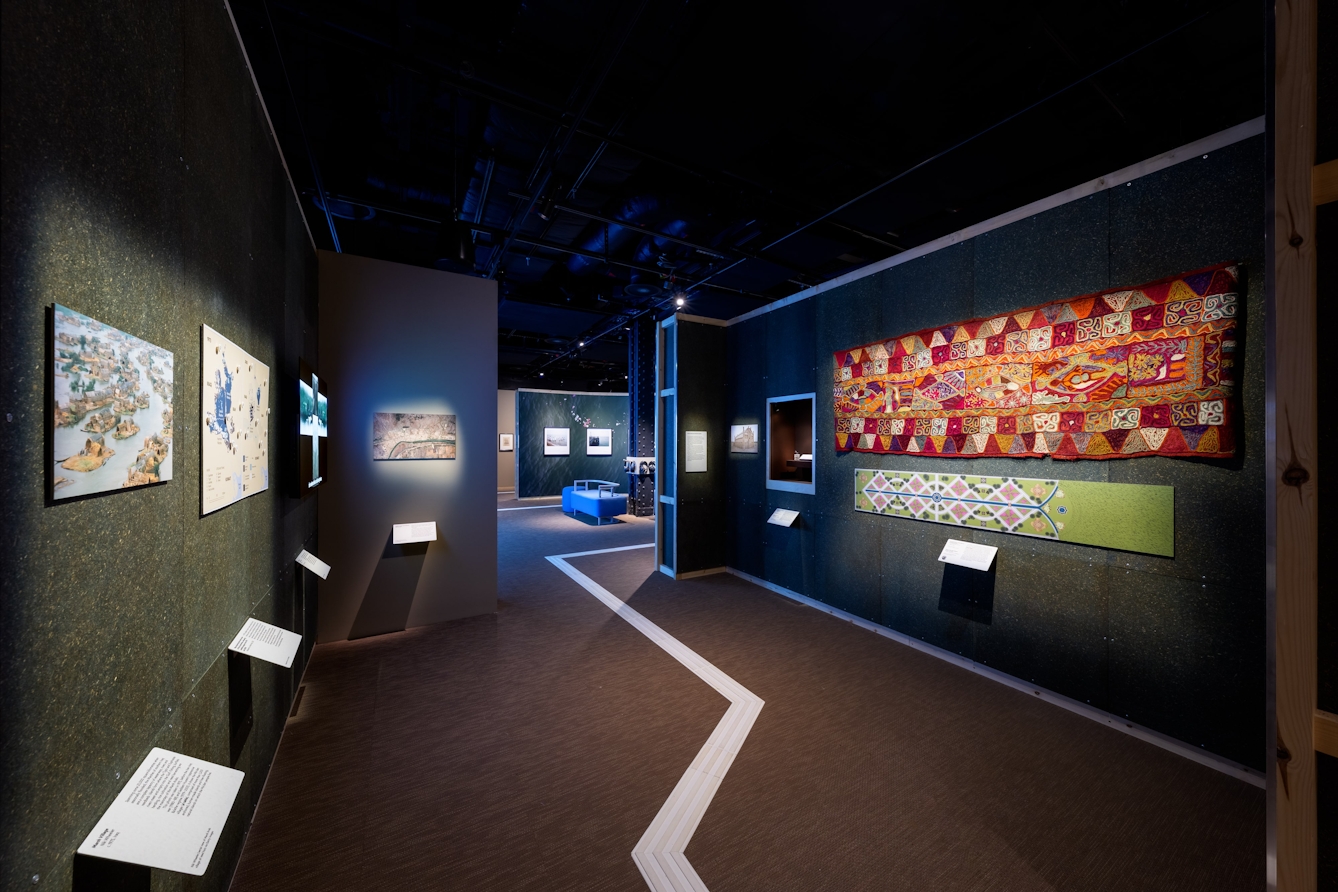
Eden in Iraq is a project to create a Wastewater Garden in the marshes in Iraq. These marshes are home to indigenous people called the Ma’dan.
The Ma’dan people use plants like rushes, reeds and papyrus to make islands and buildings in the marshes.
The people making the Wastewater Garden learnt about these plants from the Ma’dan and are using them to make the garden.
This means the garden will be able to clean the polluted water that flows through it.
This display has:
- photographs
- maps of the Wastewater Garden and marshes in Iraq
- a wedding blanket made by the Ma’dan people
- historical objects
- a film work called ‘In the Marshes’ by Meridel Rubenstein that is 10 minutes long.
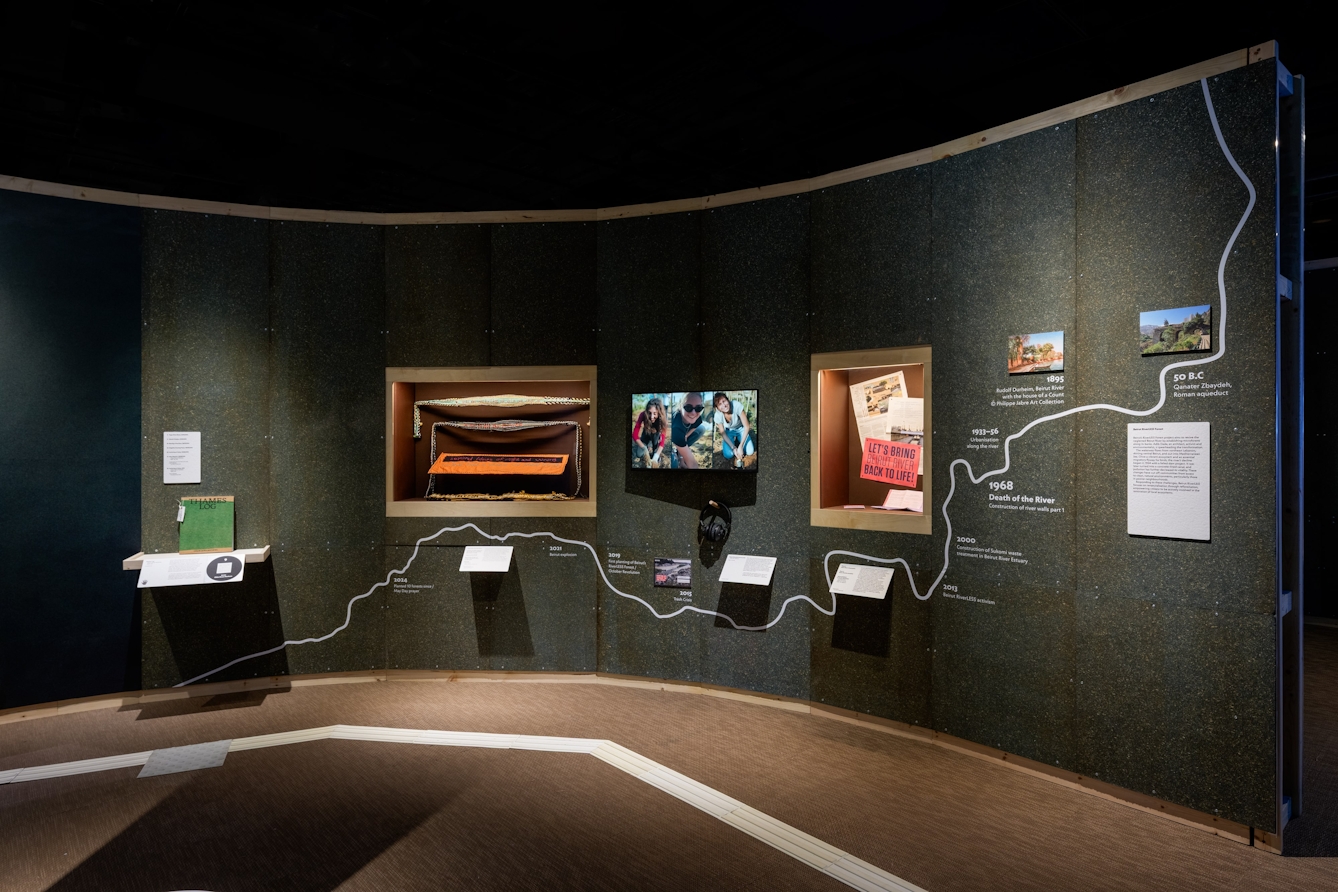
‘Beirut RiverLESS Forest’ is a project created by Adib Dada.
Adib Dada is an architect, activist and environmentalist.
In Beirut, Lebanon, the river is very polluted.
‘Beirut RiverLESS Forest’ aims to renaturise the river. Renaturise means planting trees and allowing the river to flow on a more natural course. This means there is less pollution. He did this by working with people who live in the area.
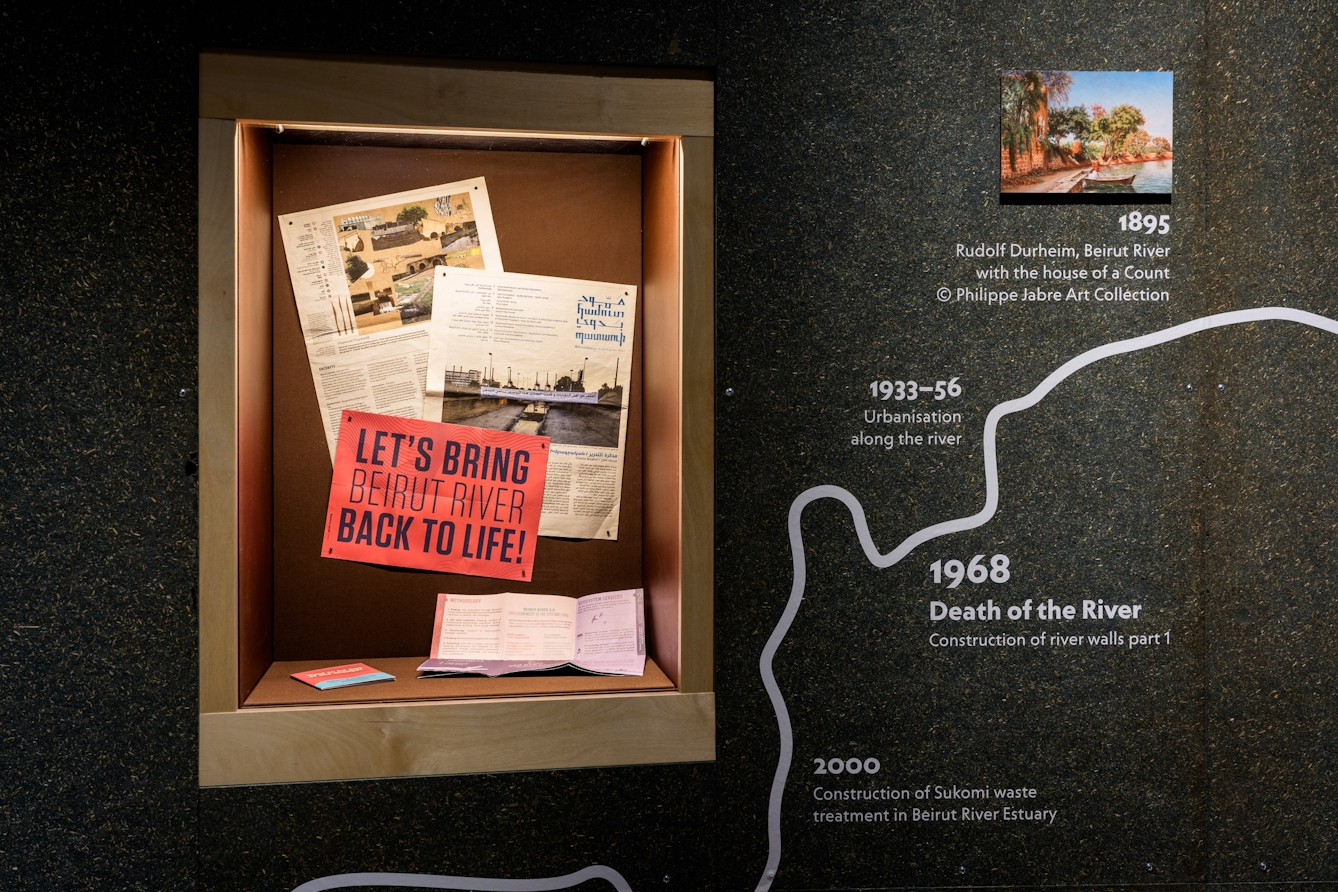
This section has:
- pamphlets
- newspaper articles
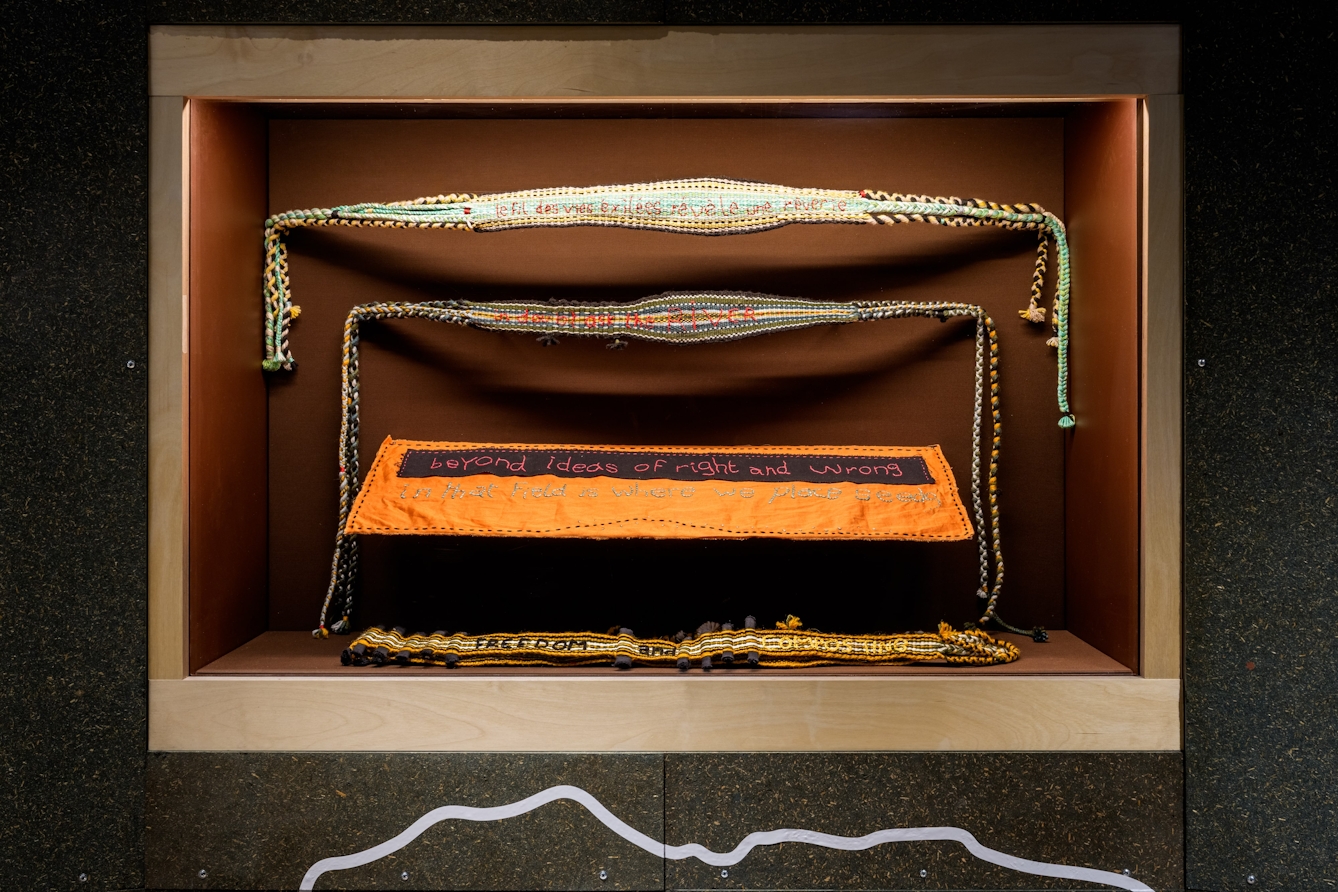
- woven belts made as a prayer to bless the river
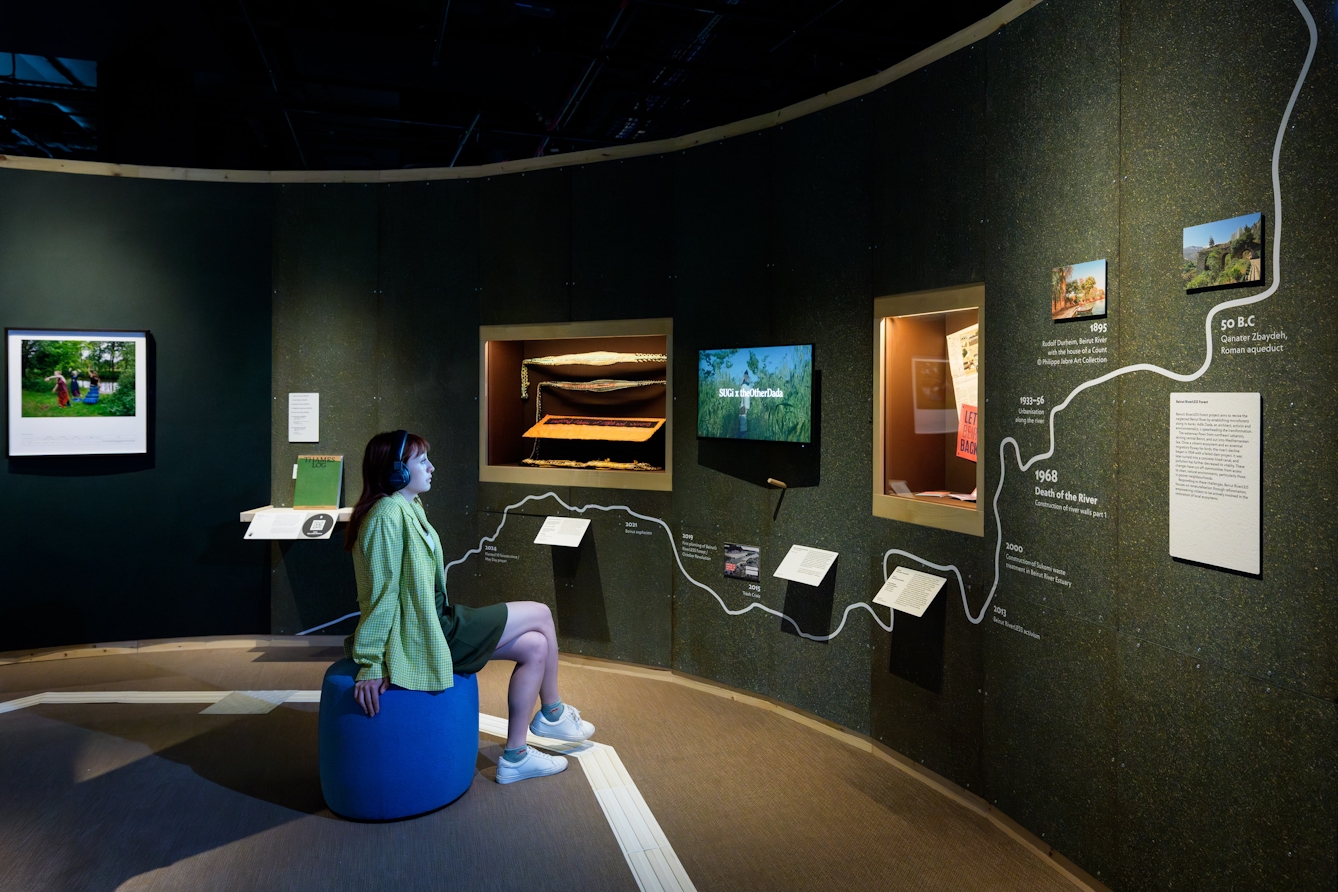
- a film called ‘Beirut's RiverLESS Forest by SUGi’.
The film is 4 minutes long.
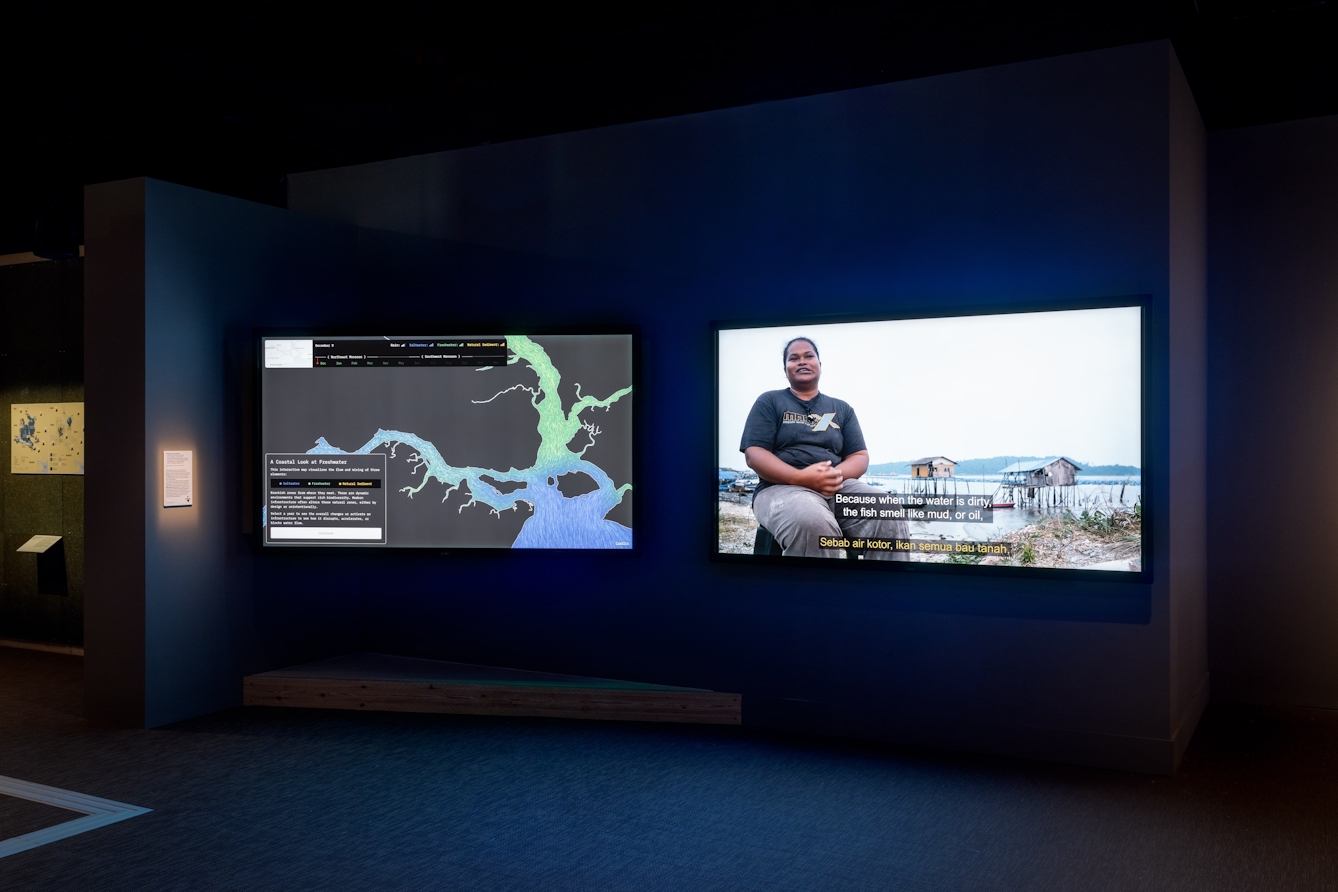
‘A Coastal Look at Freshwater’ is an installation by Feifei Zhou and SeaCoast that focuses on the Johor Straits. This is a narrow waterway between Singapore and Malaysia, in East Asia.
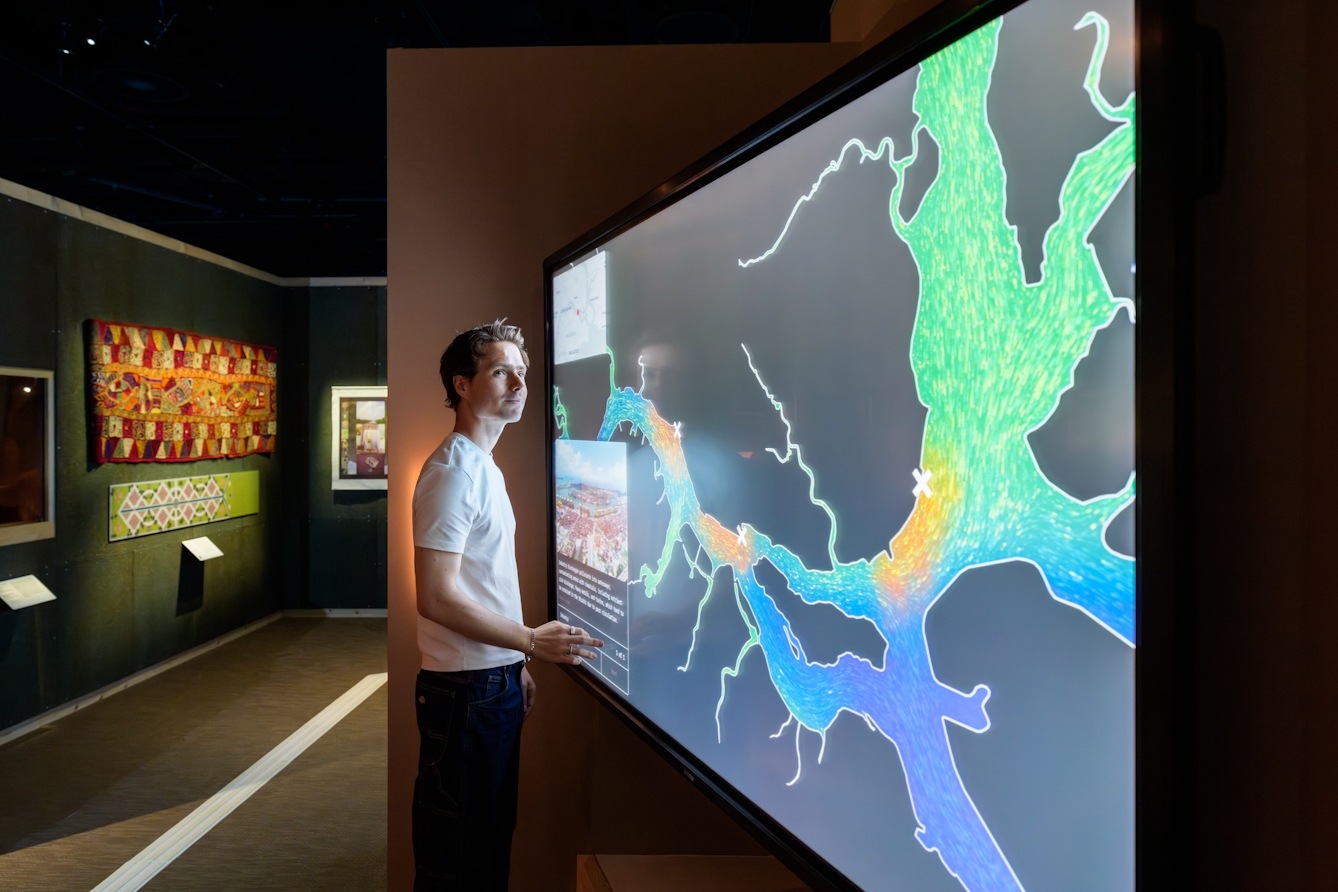
There is a digital interactive on a screen.
You can touch this screen to see different ways human activities and building affect:
- indigenous communities
- animals and plants
- the environment.

If you need any help, you can speak to a member of our team.
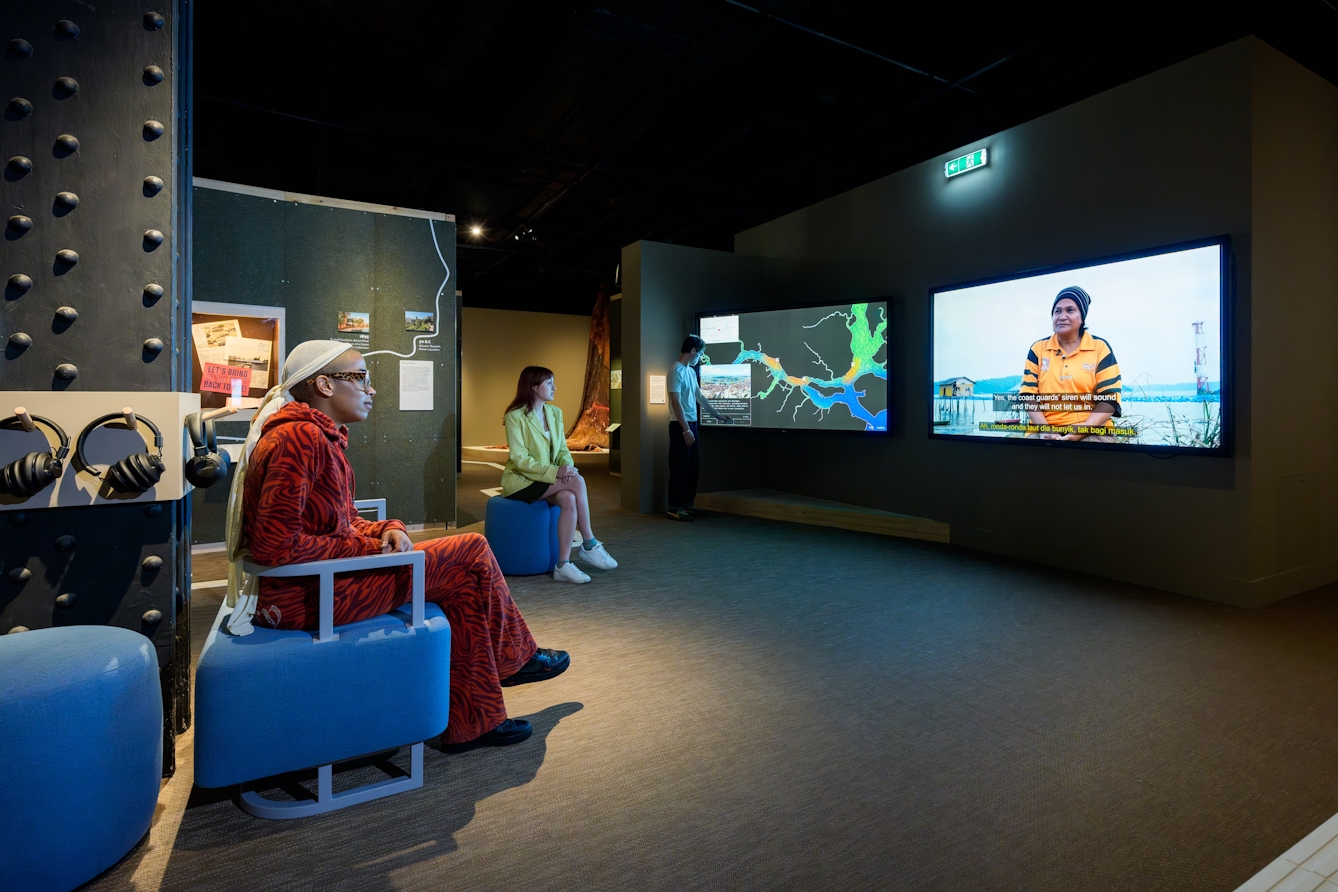
There is also a film called ‘Where Water Ends’.
It is 14 minutes long.
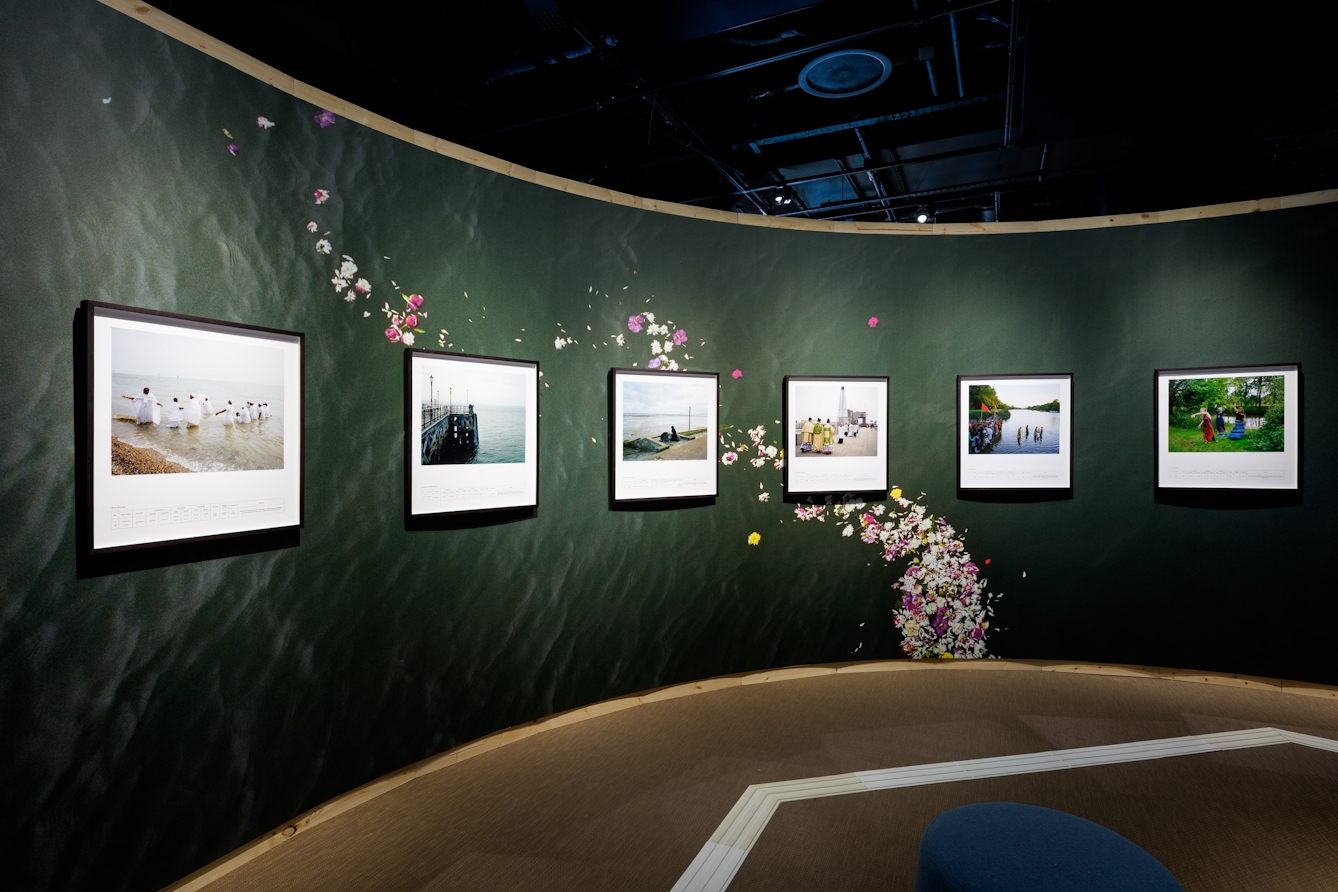
‘Thames Log’ by Chloe Dewe Matthews is a series of photos of people along the River Thames.
Chloe is interested in different people’s relationships with the river.
The photographs show the activities that people do along the Thames. This includes:
- religious rituals, like festivals or prayers
- personal activities, like scattering ashes and remembering loved ones.
The series shows how the River Thames can be important to different people.
What is in section 5
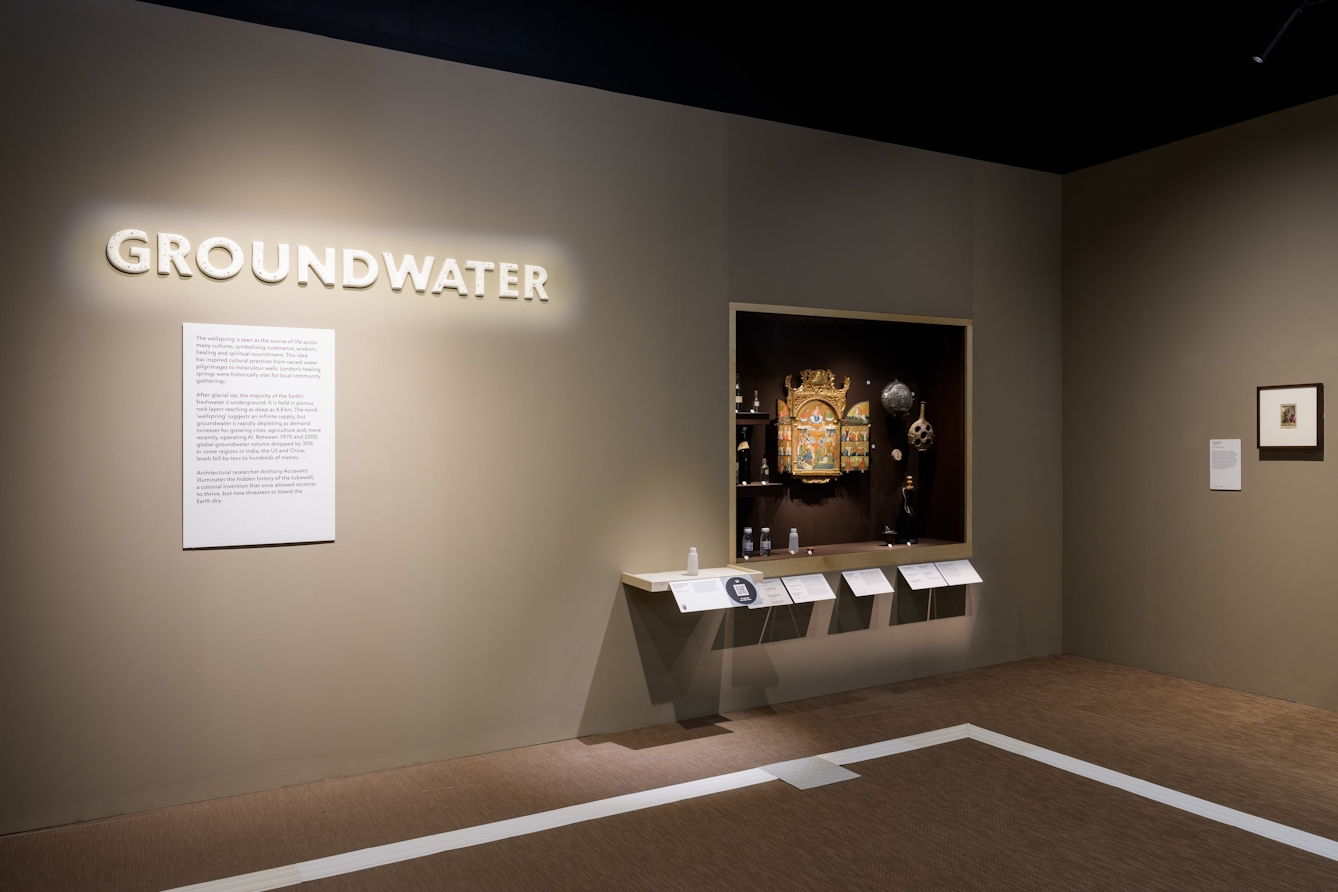
Section 5 is called ‘Groundwater’.
Groundwater is water that is stored in aquifers. Aquifers are layers of rock underground.
Humans can take groundwater out of the ground using wells or springs. A spring is a place where water naturally flows out of the ground.
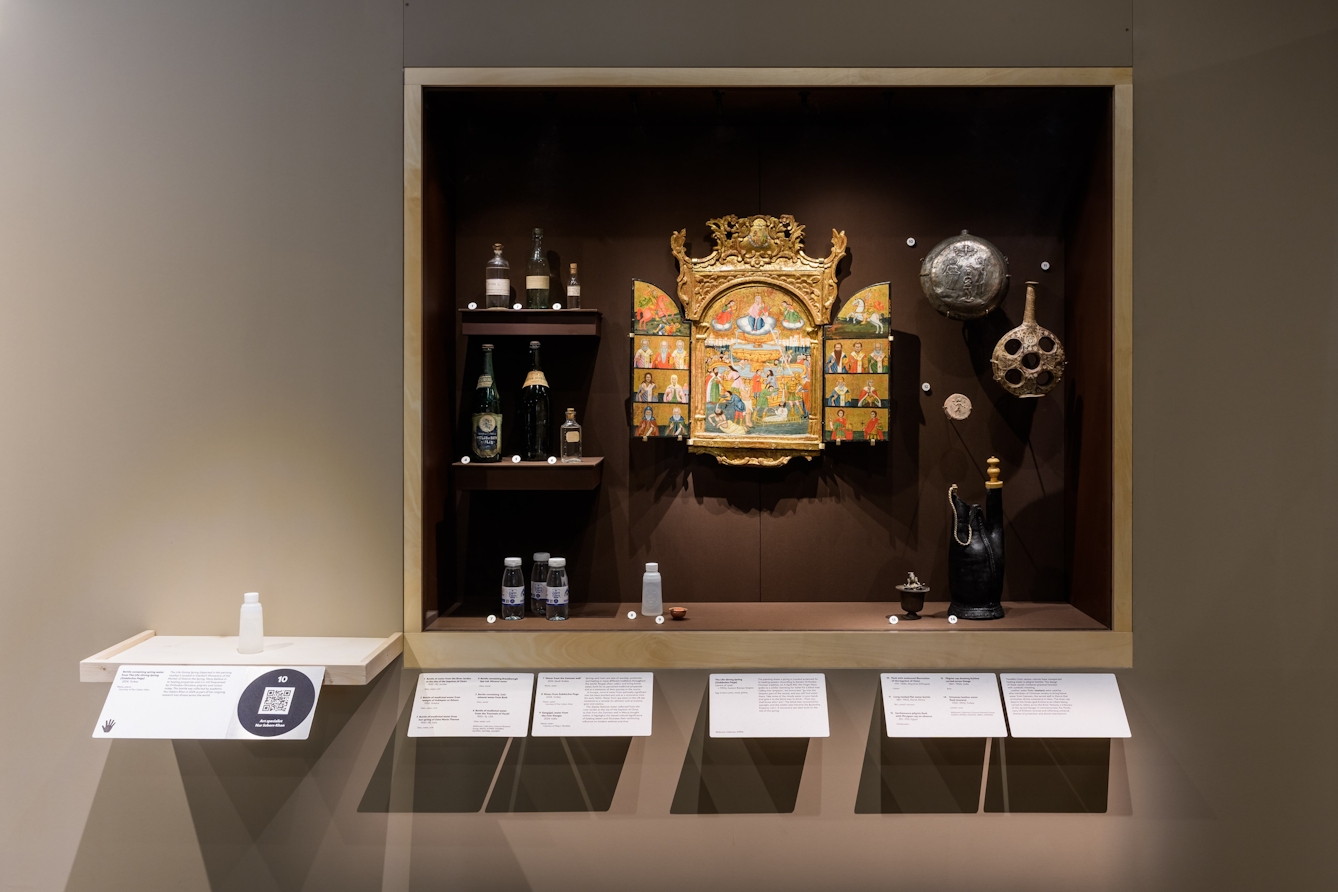
Water from underground springs is often seen as sacred.
In the sacred water area there is a painting called ‘The Life-Giving Spring’. This is a sacred spring in Istanbul in Turkey. People go to this spring to use the water for healing.
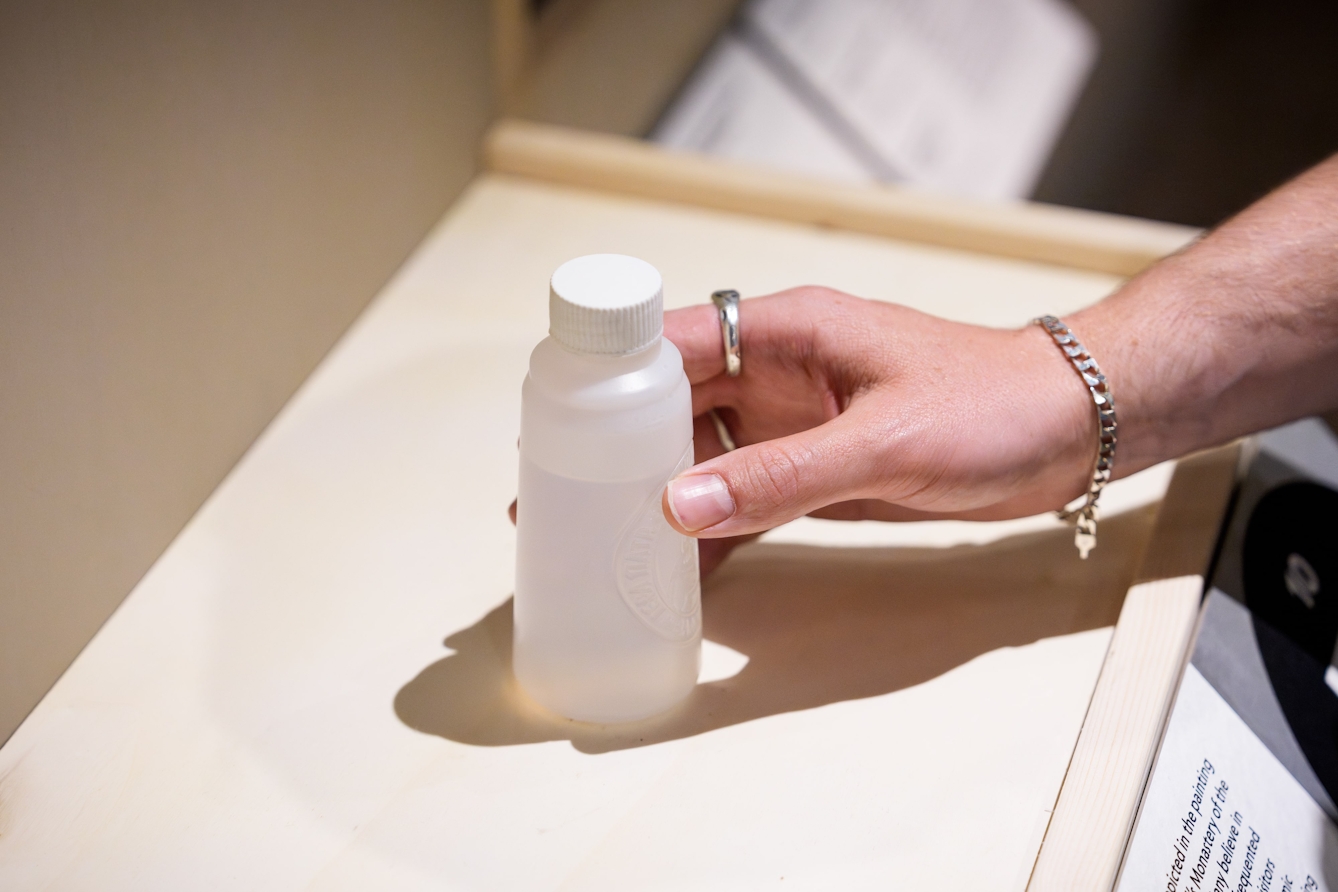
Researcher Nur Sobers Khan went to this spring and took some sacred water in a plastic bottle.
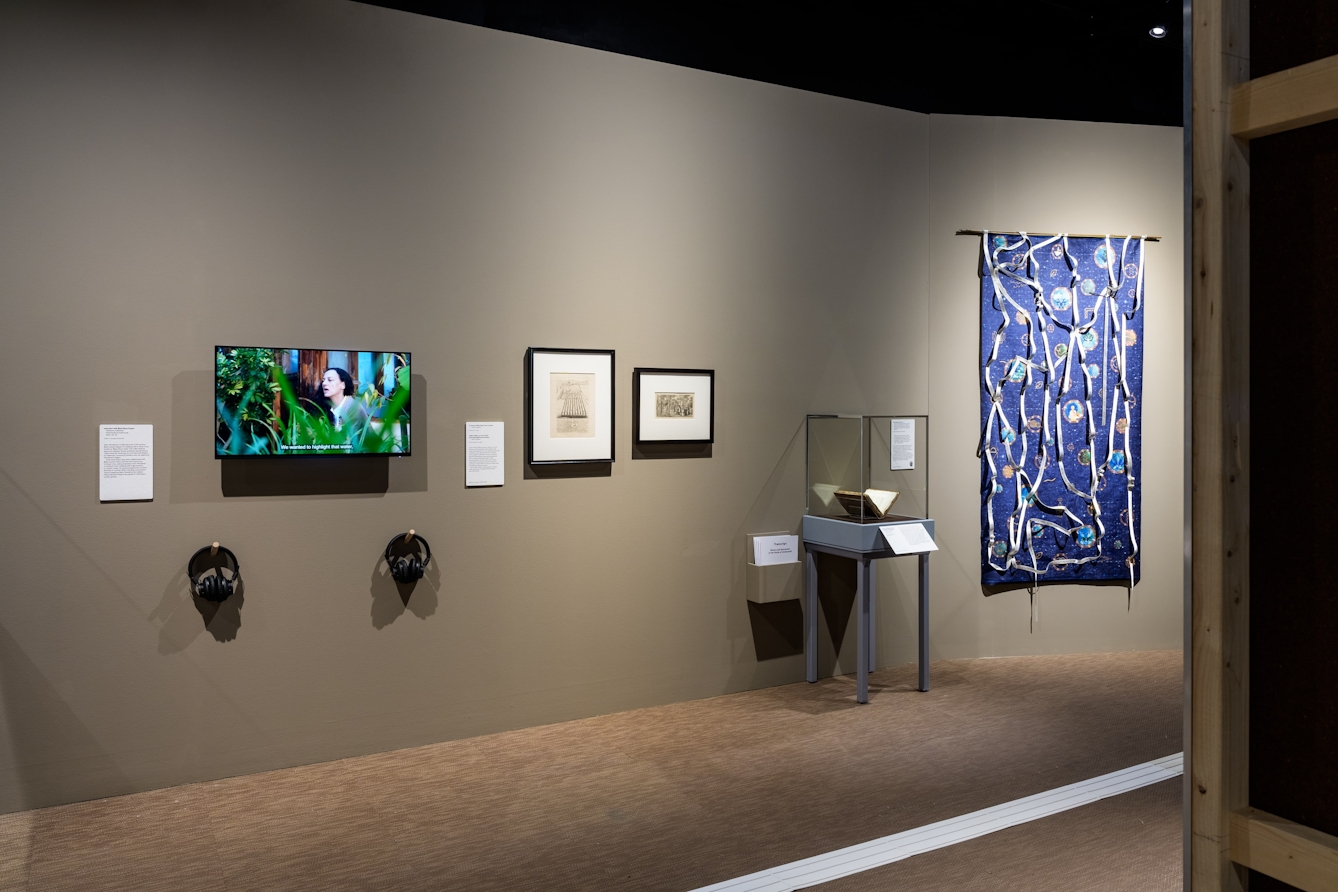
There is another area on the Black Mary Project by Gaylene Gould.
Stories and documents say that Mary Woolaston was a Black woman in King's Cross, London, around 400 years ago. Mary looked after a healing well.
The Black Mary project is trying to find where this well is. The project wants to bring people together to celebrate healing and community.
In this area there is:
- A textile created by artist Gaylene Gould. It shows symbols, stories and images related to Mary Woolaston.
- Engravings about the history of wells in London.
- Dowsing rods. Some people believe they can find water by using dowsing rods.
- A film about the Black Mary Project. It is 5 minutes long.
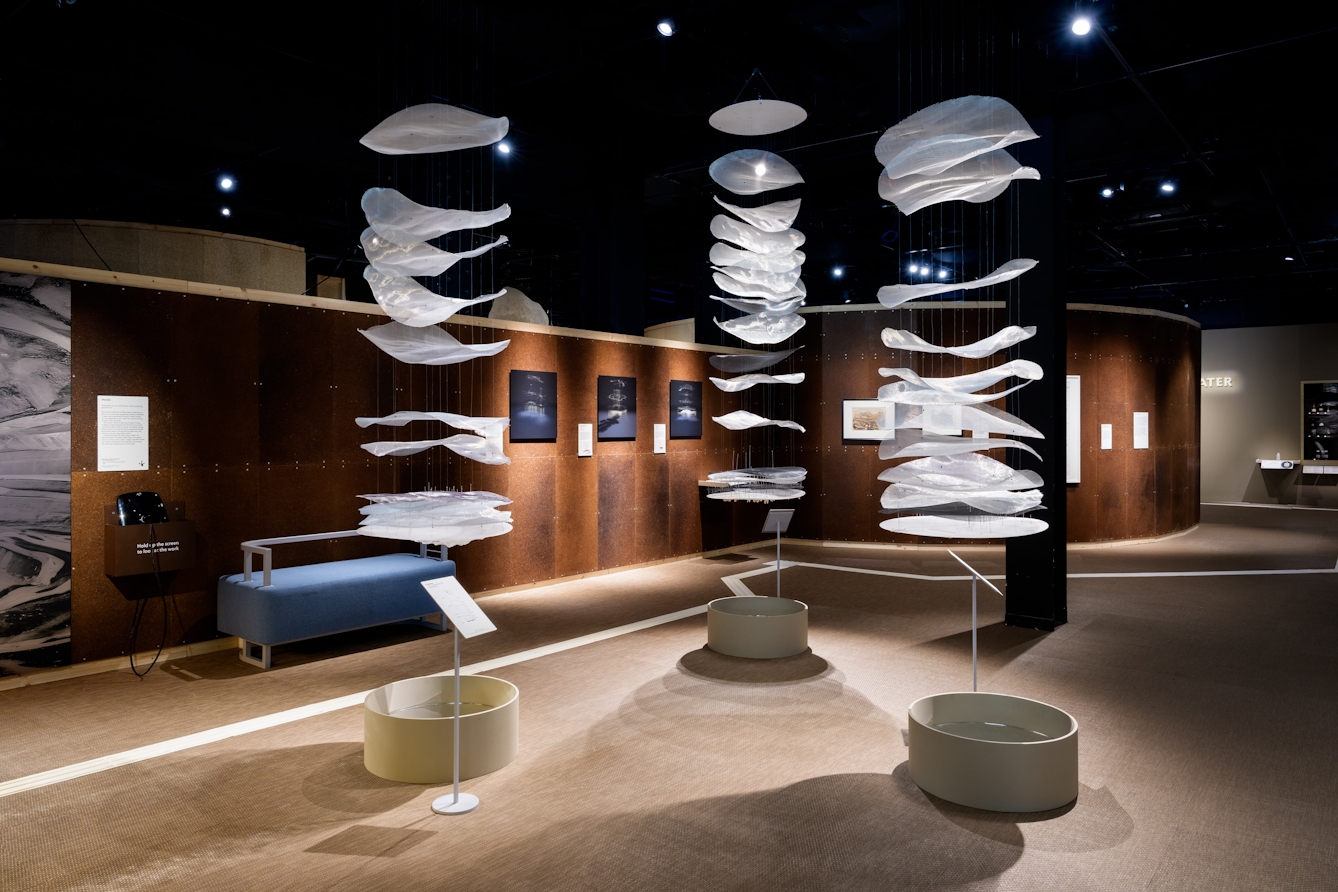
A third area in this section is called ‘Groundwater Earth’ by Anthony Acciavatti.
Anthony Acciavatti is an architect and researcher. He created ‘Groundwater Earth’ to research the impact of groundwater extraction around the world.
Groundwater extraction means getting water from underground using tube wells.
Tube wells are machines that pull water from underground.
In this exhibition, we look at three places:
- the city of Jakarta in Indonesia
- the city of New Delhi in India
- the region of Phoenix / Tuscon in the USA.
The extraction of water in these places is causing damage to the environment.
In this area there are:
- pictures of tube wells
- drawings of the three places
- three large sculptures made by Anthony Acciavatti that show the different layers below the ground.
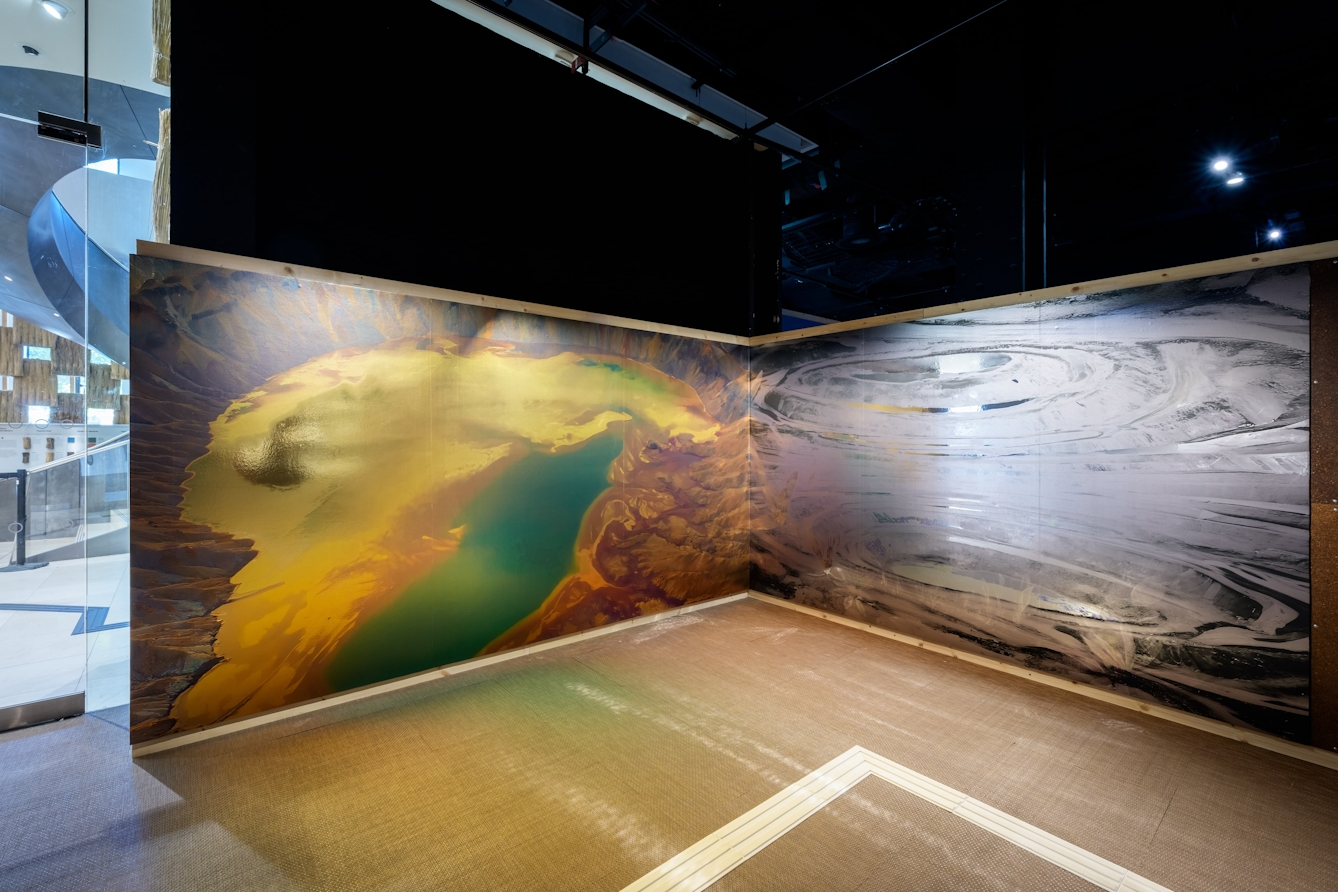
The last artwork in the exhibition is an augmented-reality artwork called ‘Sometimes farther than the sun’ by Raqs Media Collective.
This work was created to imagine a future where we extract water from asteroids in space.
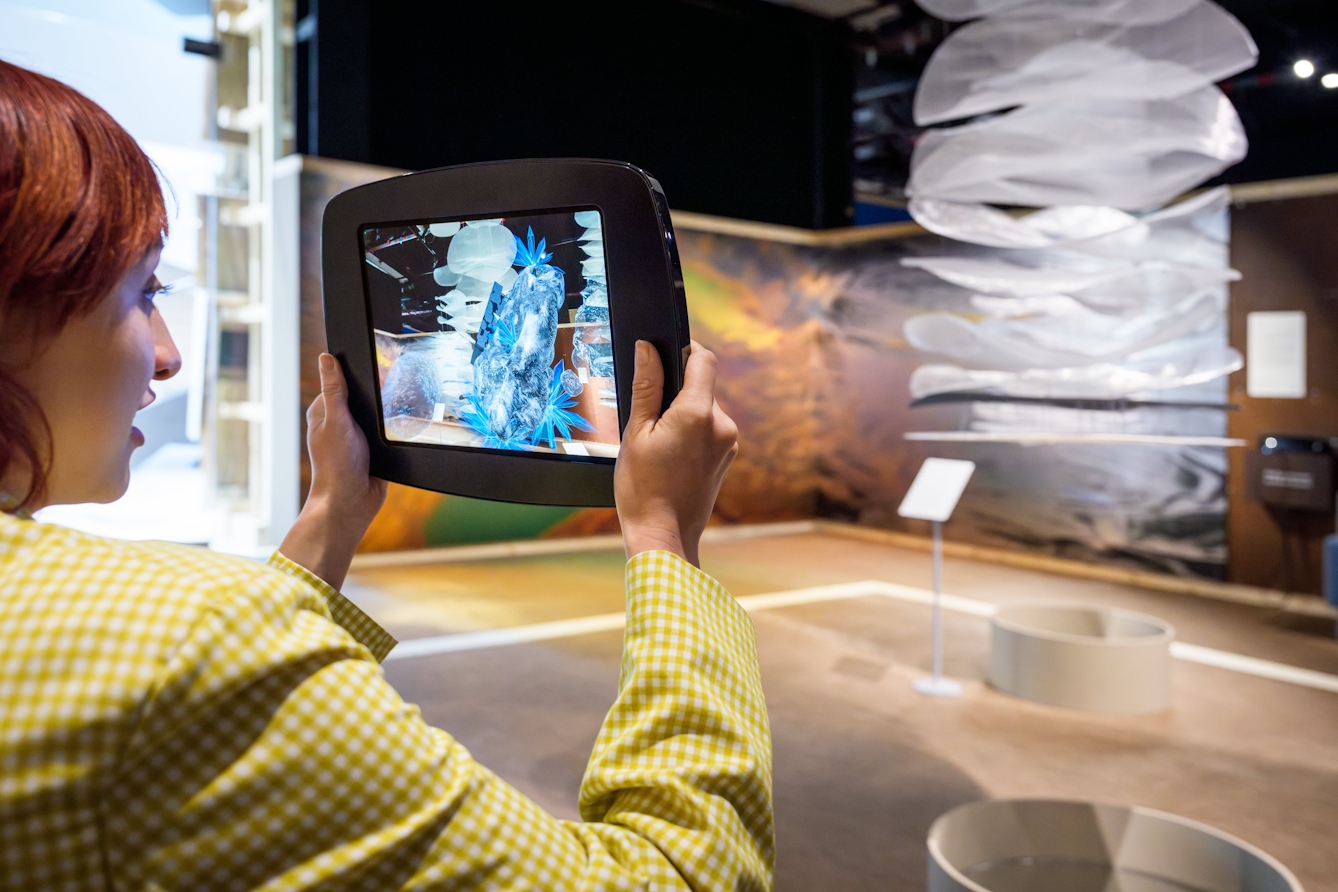
You can look at this artwork by using an iPad in the exhibition.

If you need any help, you can speak to a member of our team.
Accessibility in the exhibition
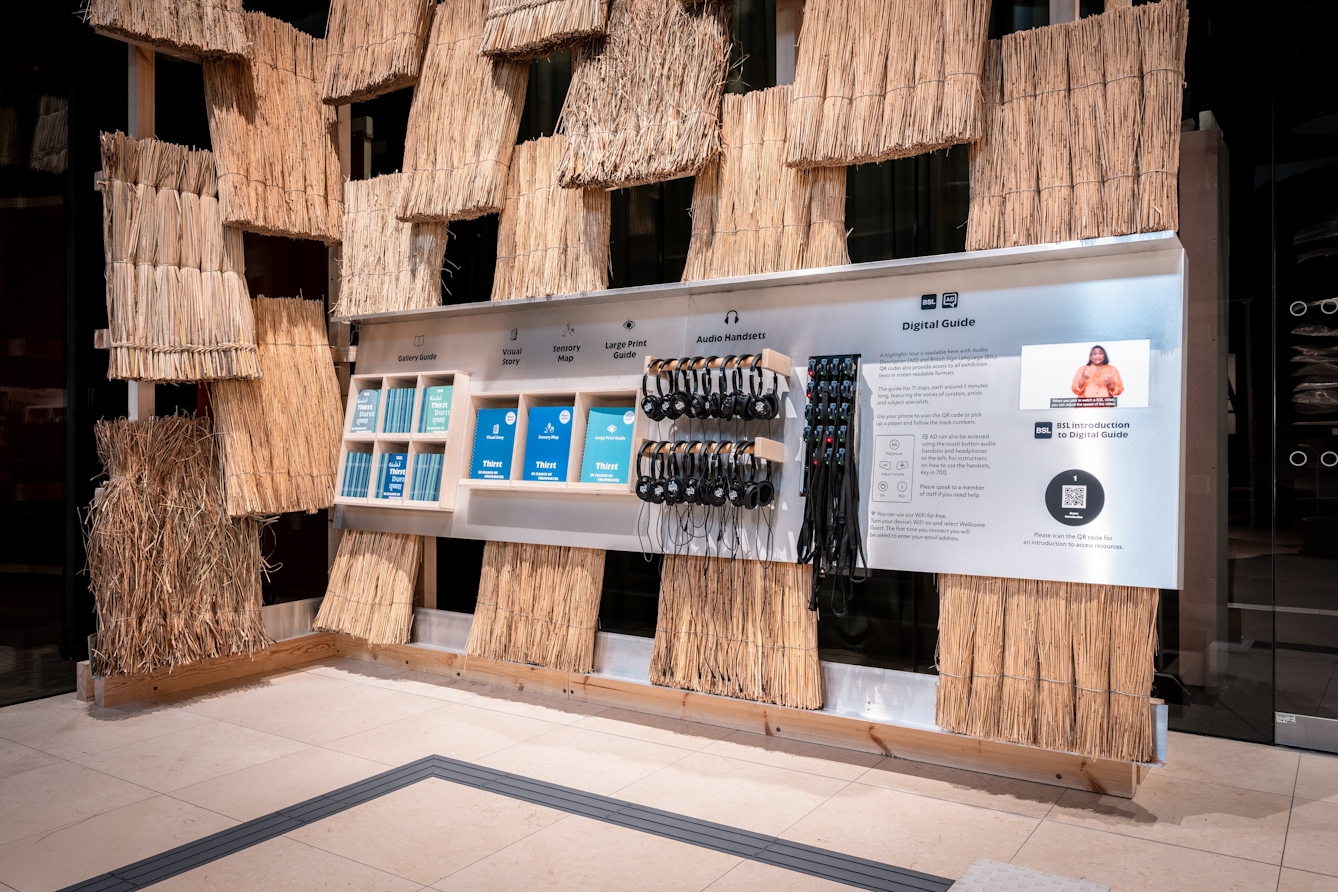
You can find accessible guides at the start of the exhibition.
The guides are:
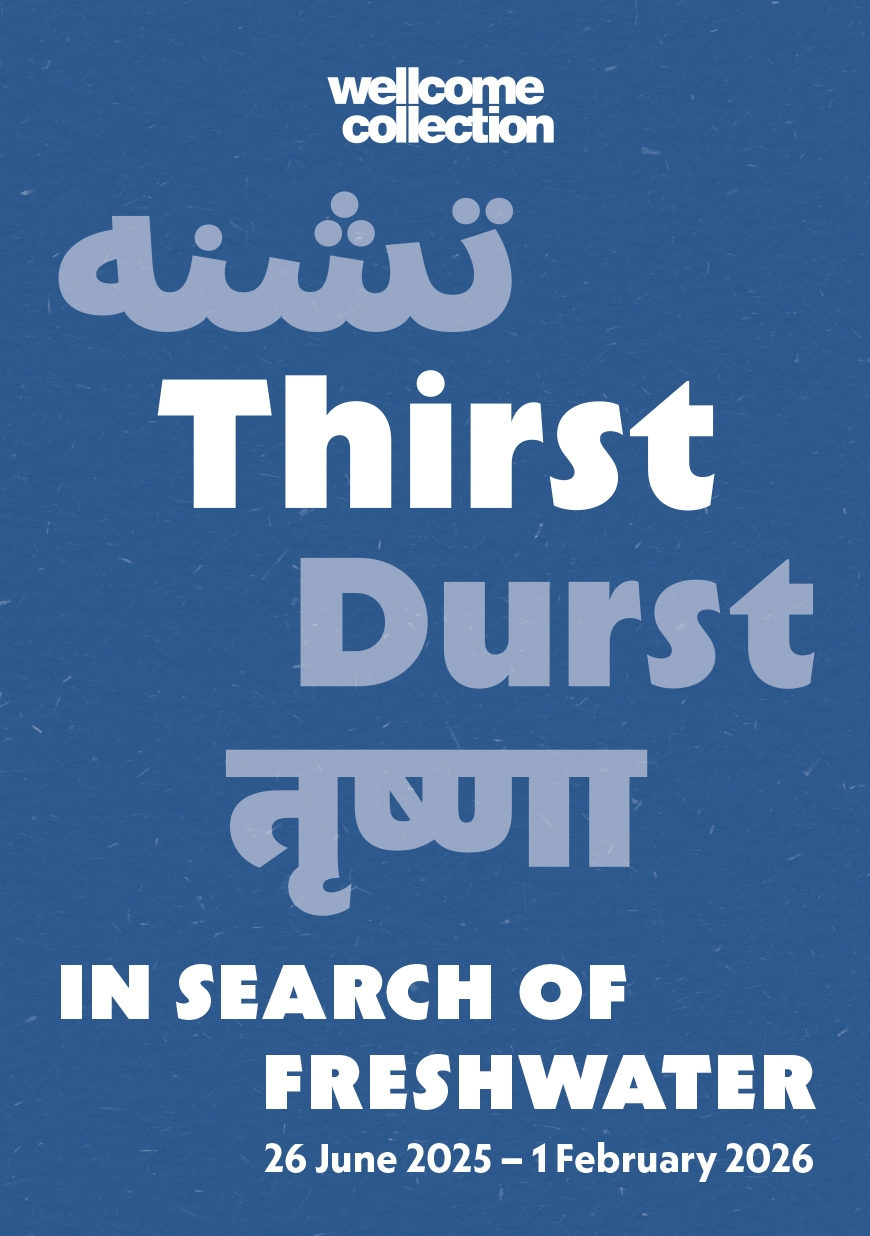
- a gallery guide with words and pictures
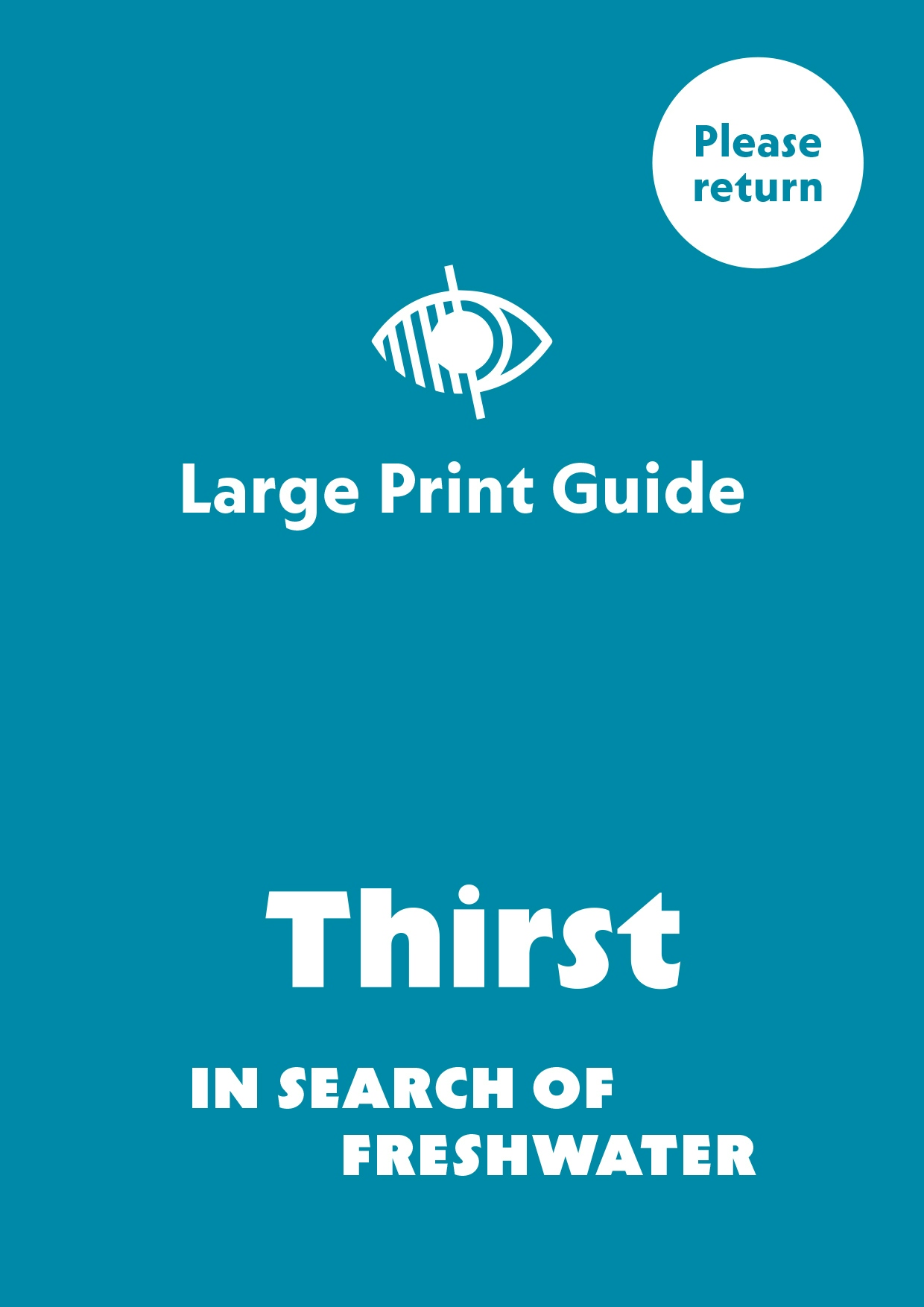
- a large-print guide
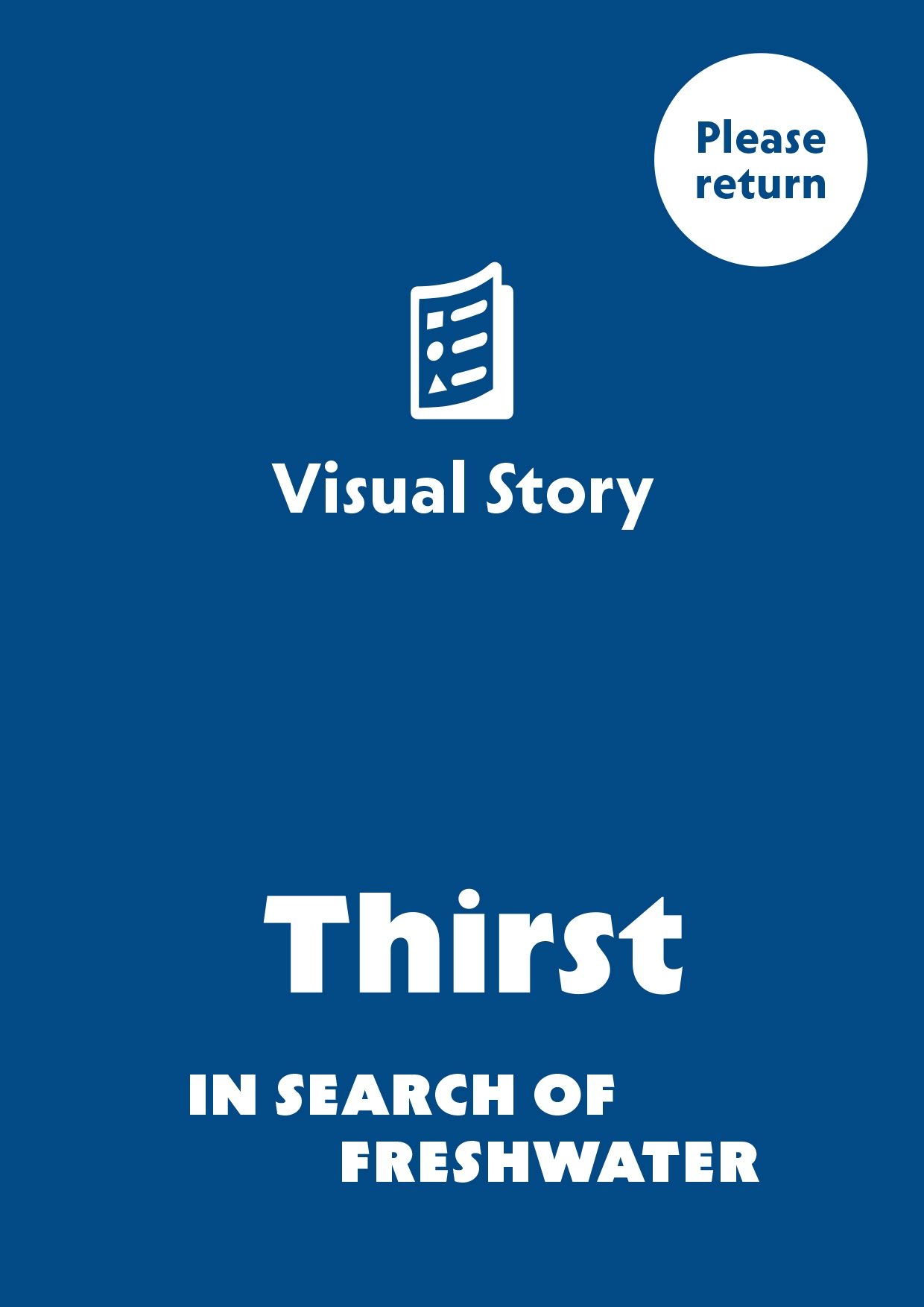
- a visual story
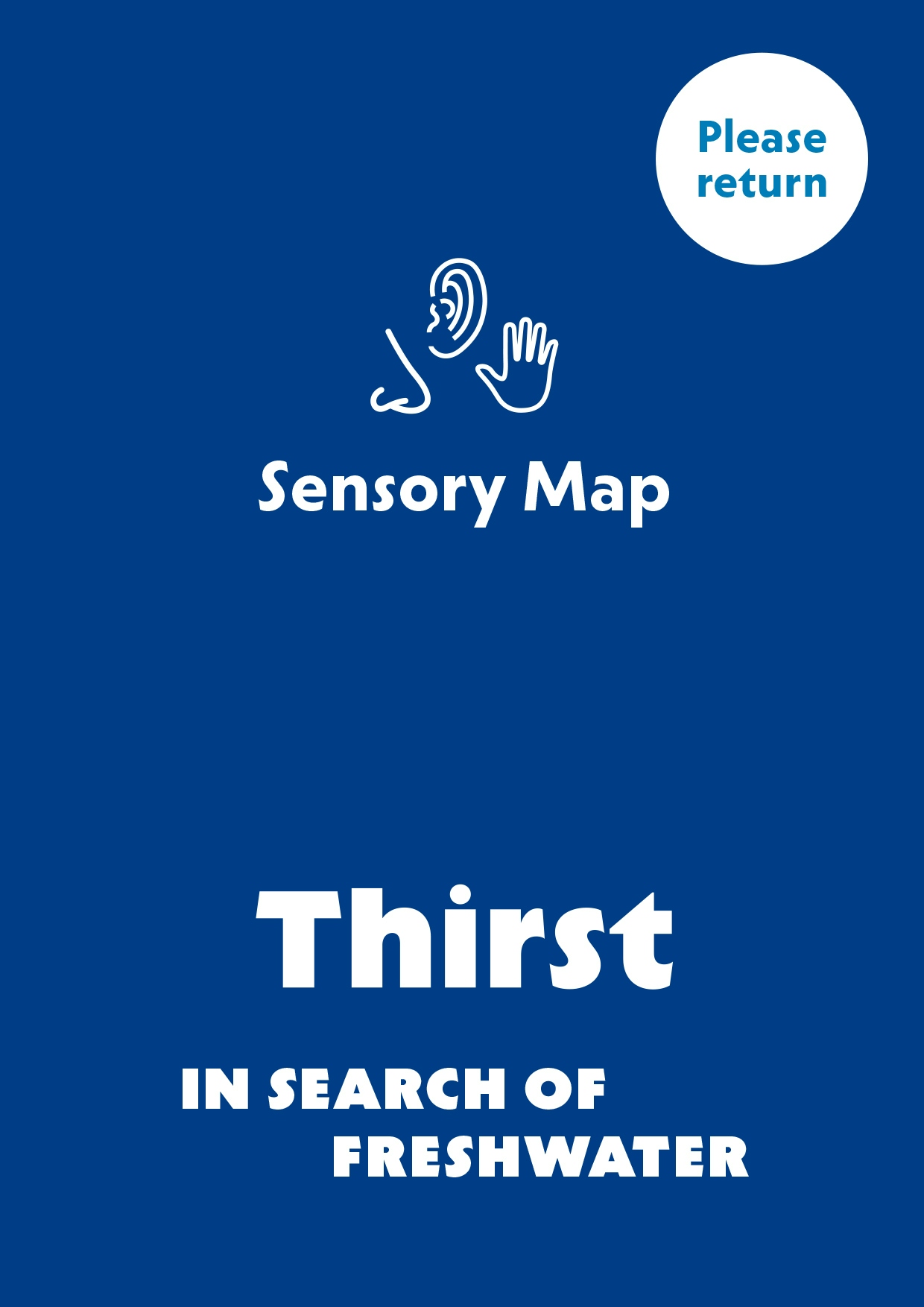
- a sensory map.
A sensory map shows you where there are things like out-loud sound, bright lights or seating.
Digital guides
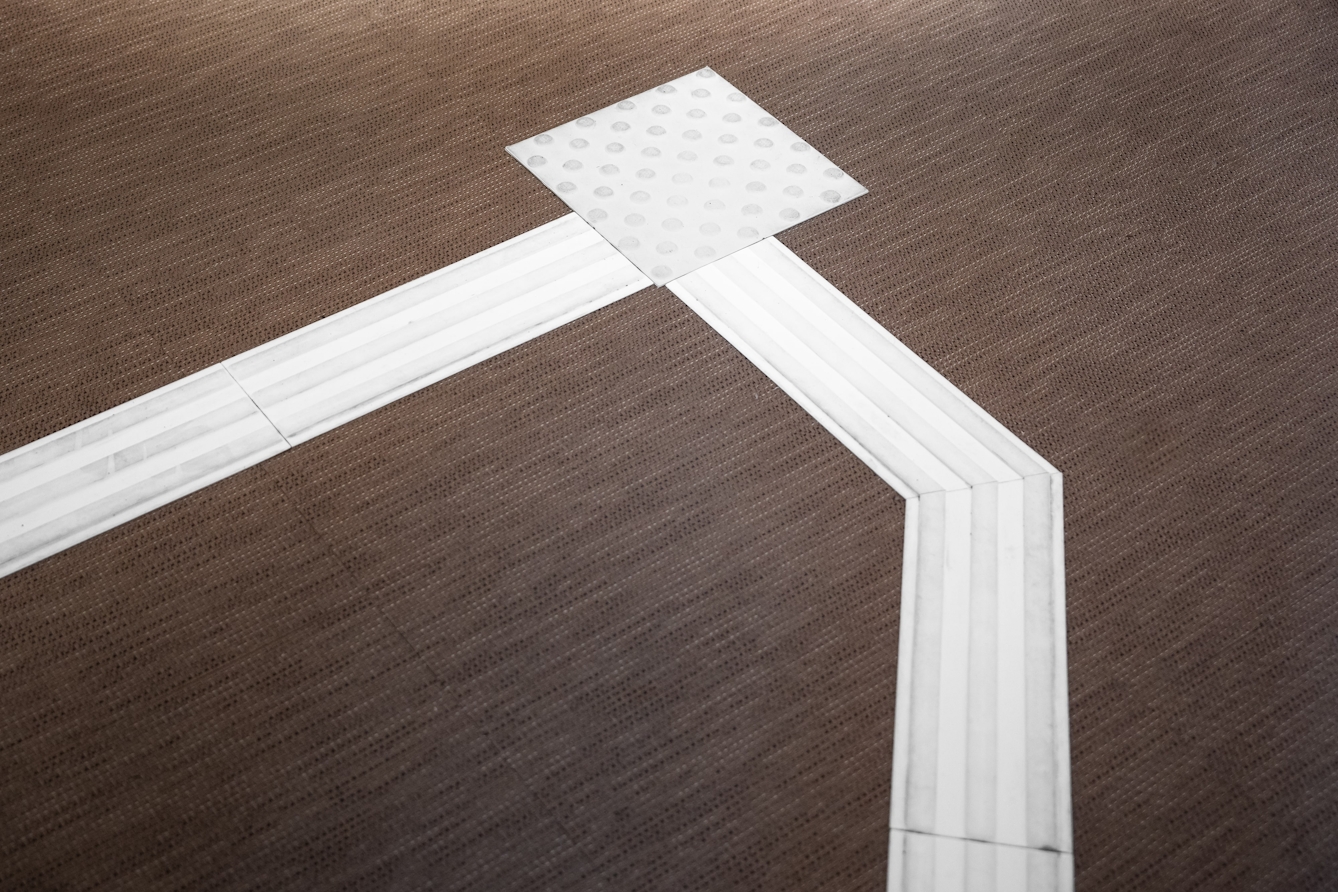
There is a white line on the exhibition floor. Follow the white line to get to each stop.
The white line has a pattern that you can feel with your feet.
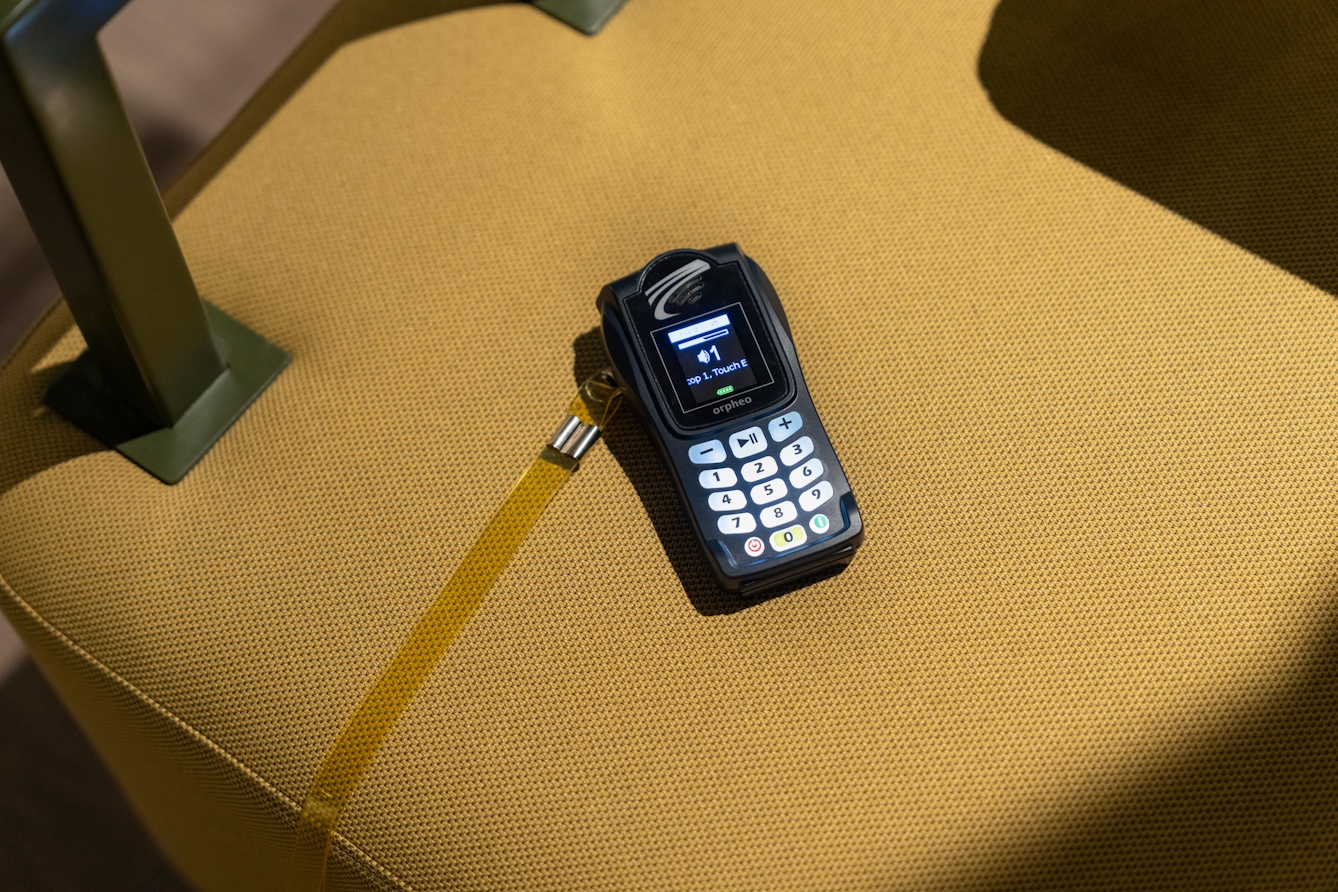
Or you can listen to the audio-described guide by:
1) picking up a touch-button handset in the exhibition
2) pressing the number of the audio stop.

If you need help with anything, you can ask a member of our gallery team.
Relaxed openings
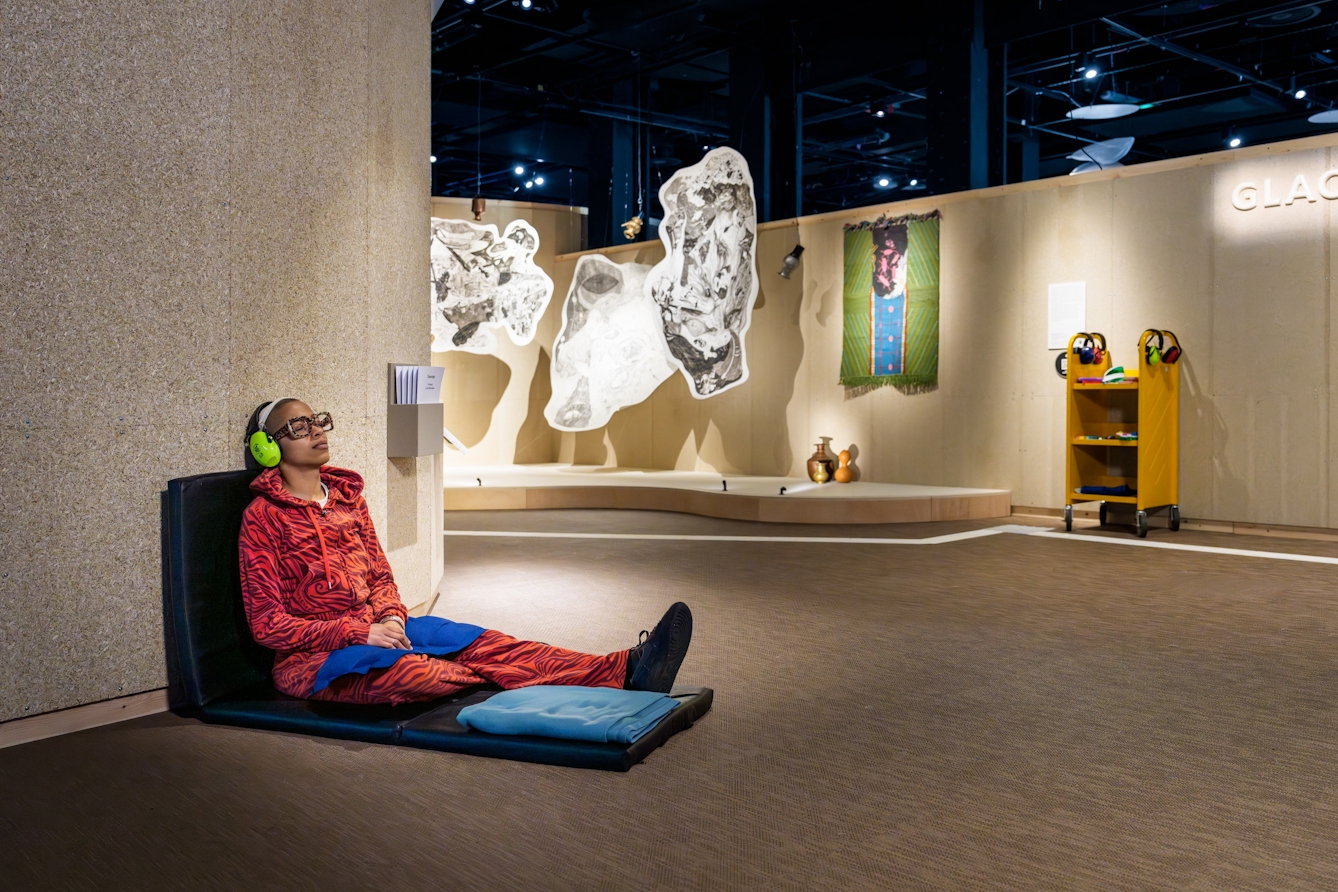
If you need additional support to enjoy this exhibition, join us for a Relaxed Opening. At a Relaxed Opening there will be:
- fewer visitors
- extra gallery staff to help you.

At a Relaxed Opening you can use our:
- cushions
- ear defenders
- tinted glasses
- tinted visors
- weighted lap pads.
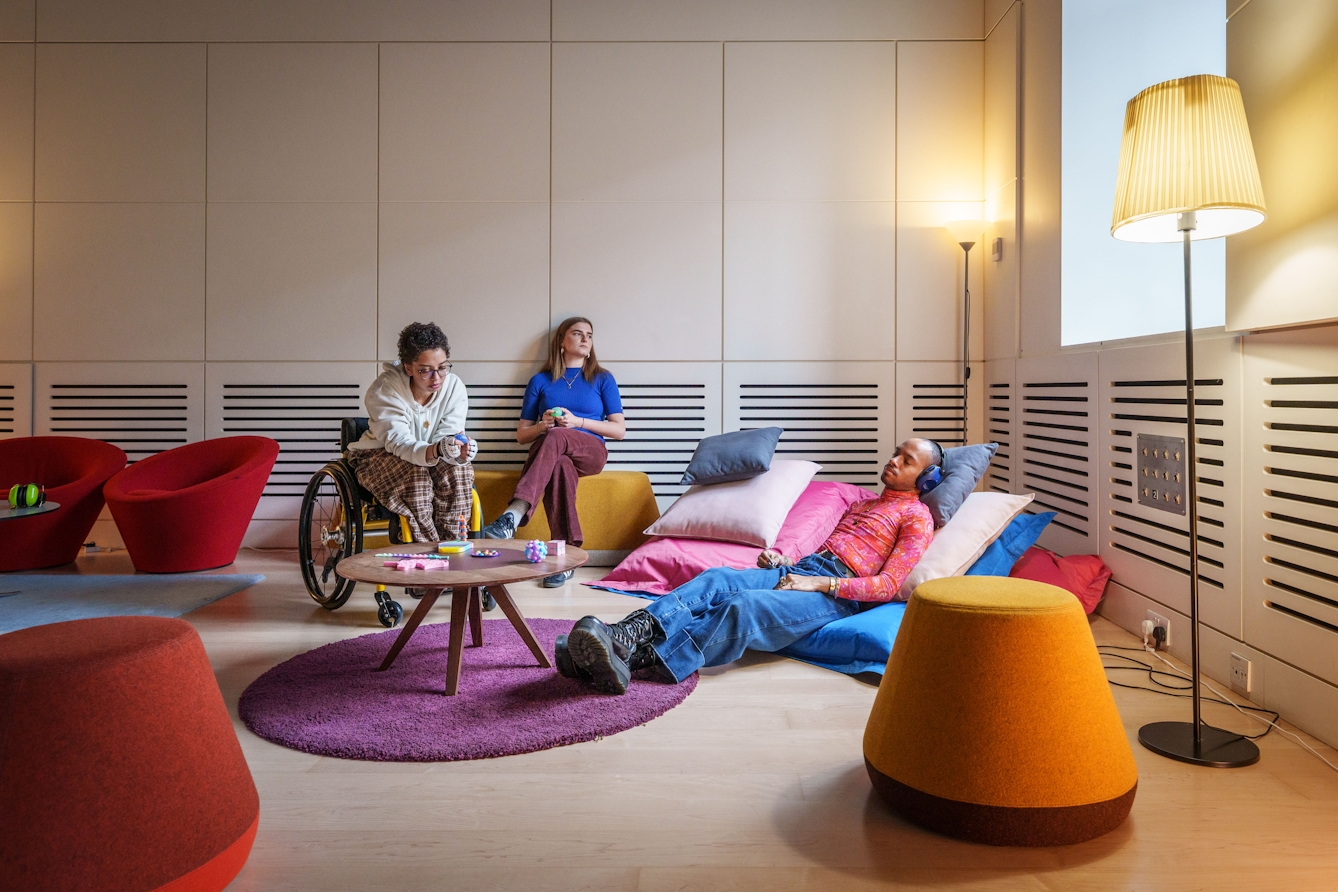
At a Relaxed Opening there will be a Chill-Out Room. The Chill-Out Room has:
- low lighting
- soft seats
- sensory and fidget toys.









